- Smooth and punch drivetrain
- High quality and ergonomic cabin
- A pretty good all-rounder
- Drivetrain isn't that efficient
- Over $40k drive away and no leather steering wheel
- Expensive service pricing
You may not know it, but the original Nissan Qashqai – called Dualis in Australia – was something of a trendsetter. Replacing the mid-00s Almera (our Pulsar) in Europe, it combined the size of a small hatchback with the higher ride height and body of an SUV and in Europe particularly, it was a big sales success. Fast forward almost two decades, and we have the third-generation of the car, which has just gone on sale locally. Is it still a trailblazer? We tested the 2023 Nissan Qashqai ST+ to find out.
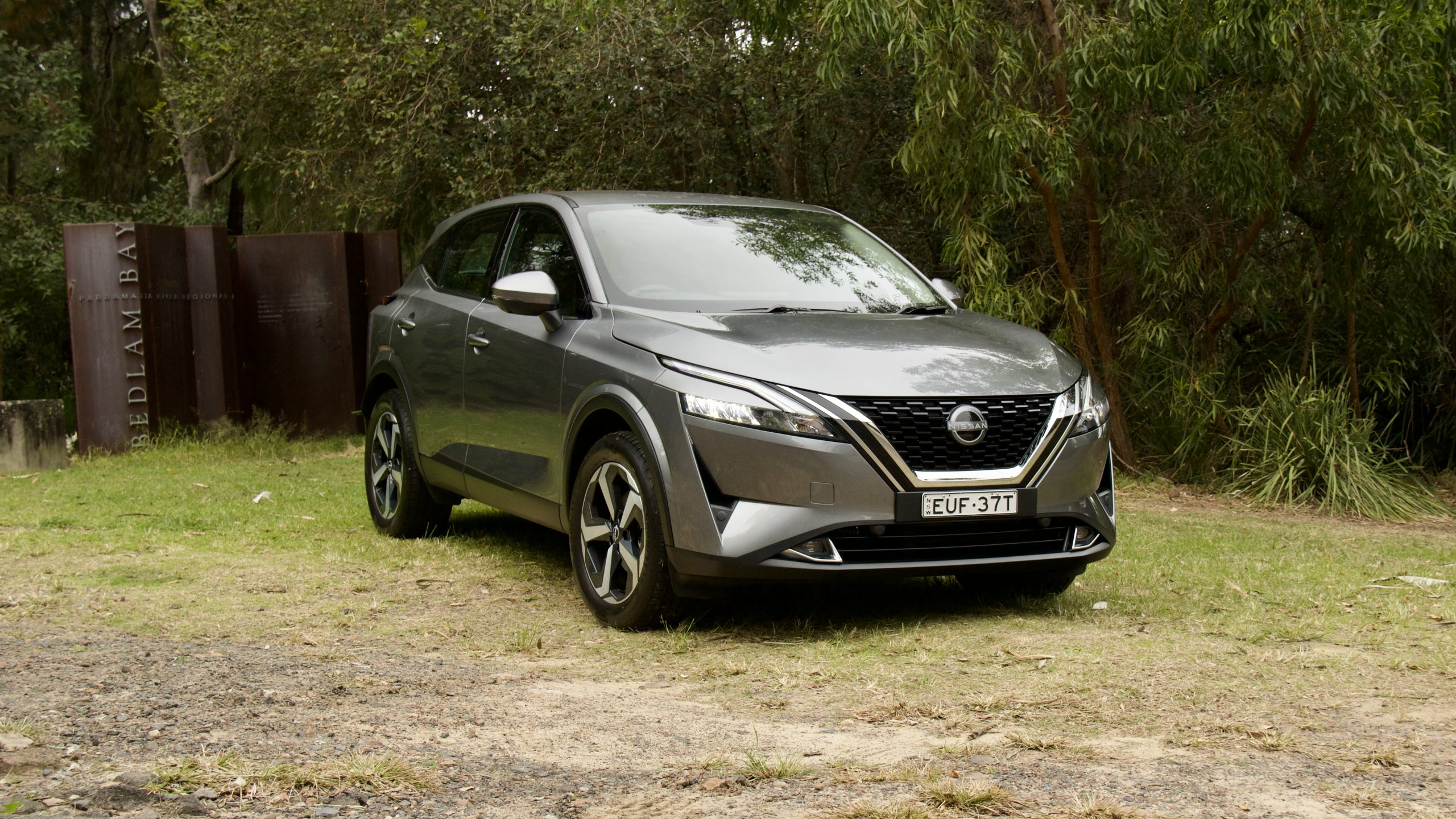
When the Dualis was released locally in 2008, it didn’t really have many competitors – cars that rode similarly high like the Toyota RAV4 and Subaru Forester had started to grow into the larger size we know today, while similar sized cars like the Mazda3 and Volkswagen Golf were less expensive. Nowadays, there’s far more competition – the Subaru Crosstrek, Kia Seltos, Volkswagen T-Roc, Hyundai Kona, Toyota Corolla Cross and Mazda CX-30 all come to mind (and there’s plenty more). What sets the Qashqai apart?
Price & Equipment: 7.5/10
The ST+ we’re testing here sits second-from-base in the Australian Qashqai range, and is priced from $37,890 plus on-road costs or around $41,500 drive away. That’s $4,000 more expensive than the base ST, but $4,300 less than the next-step-up ST-L – and a full $9,500 less than the top spec Ti.
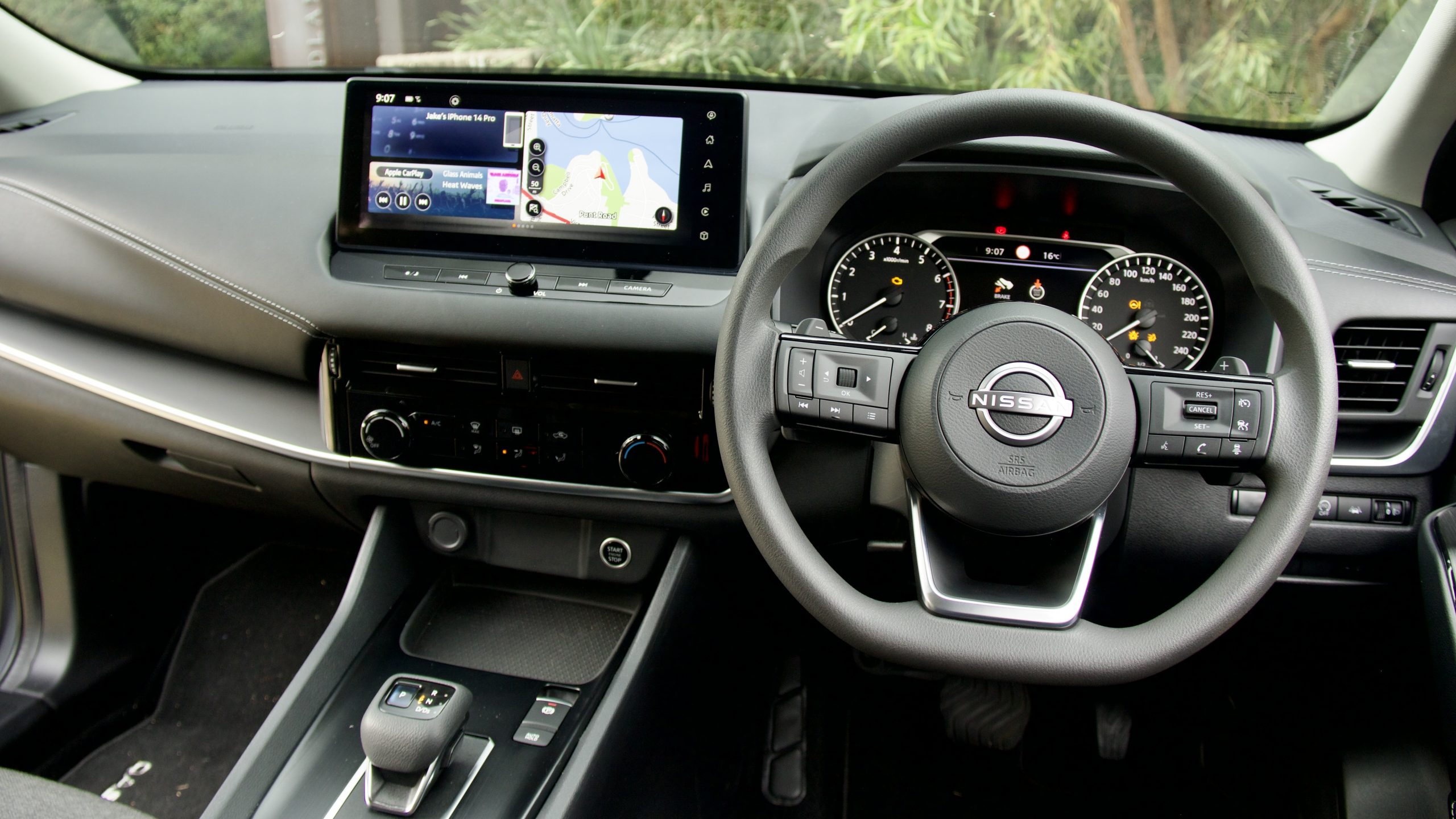
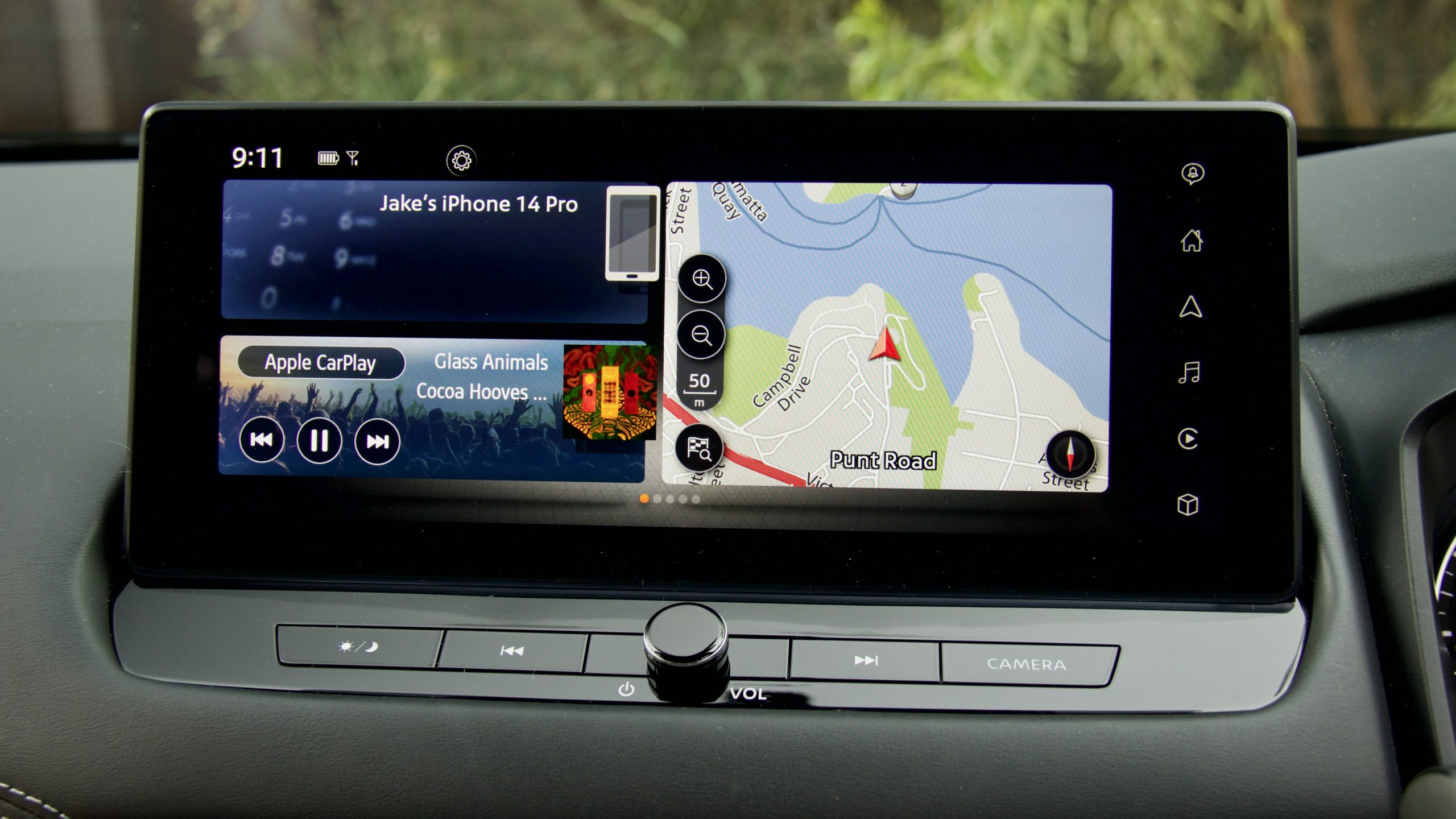
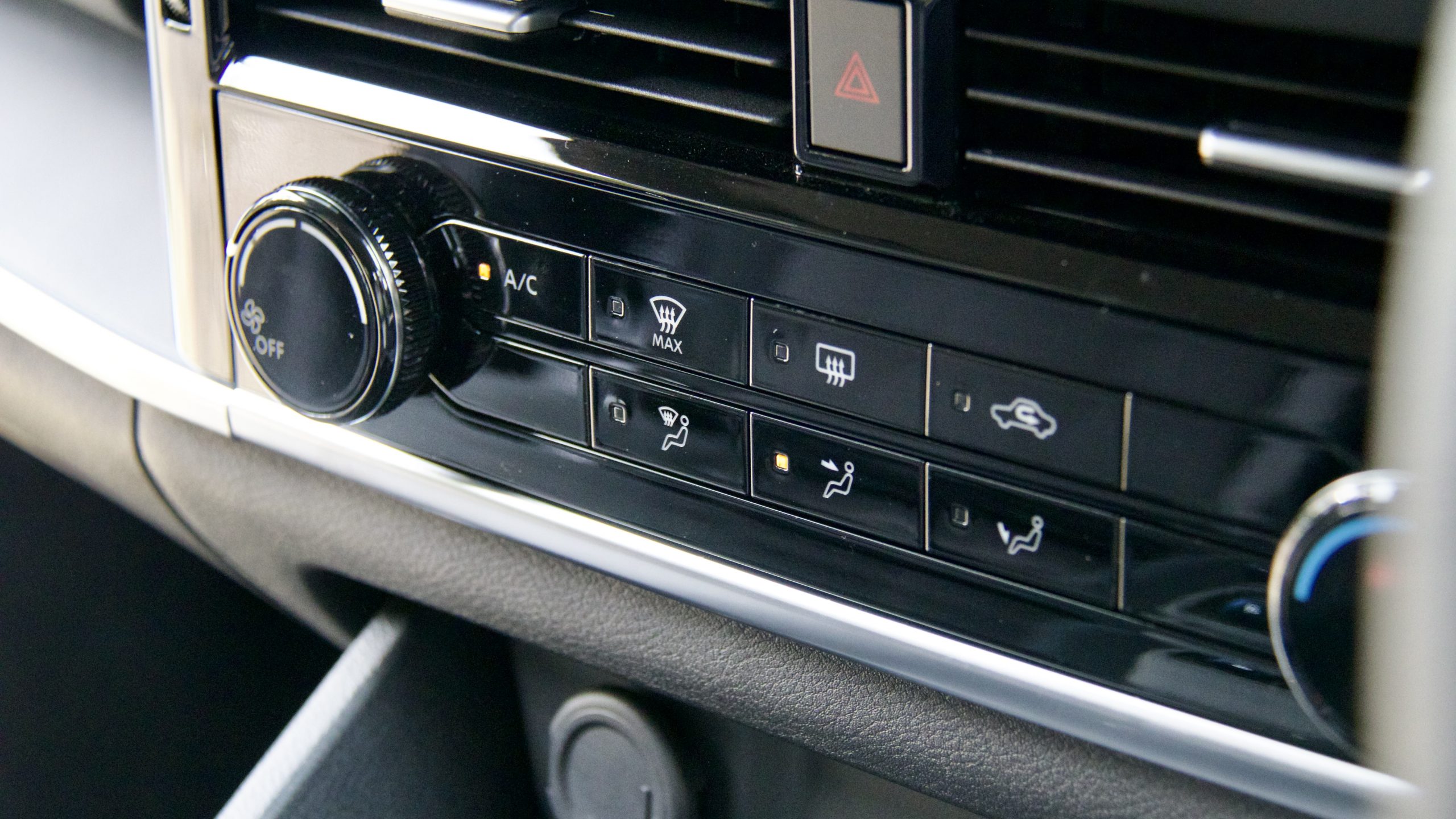
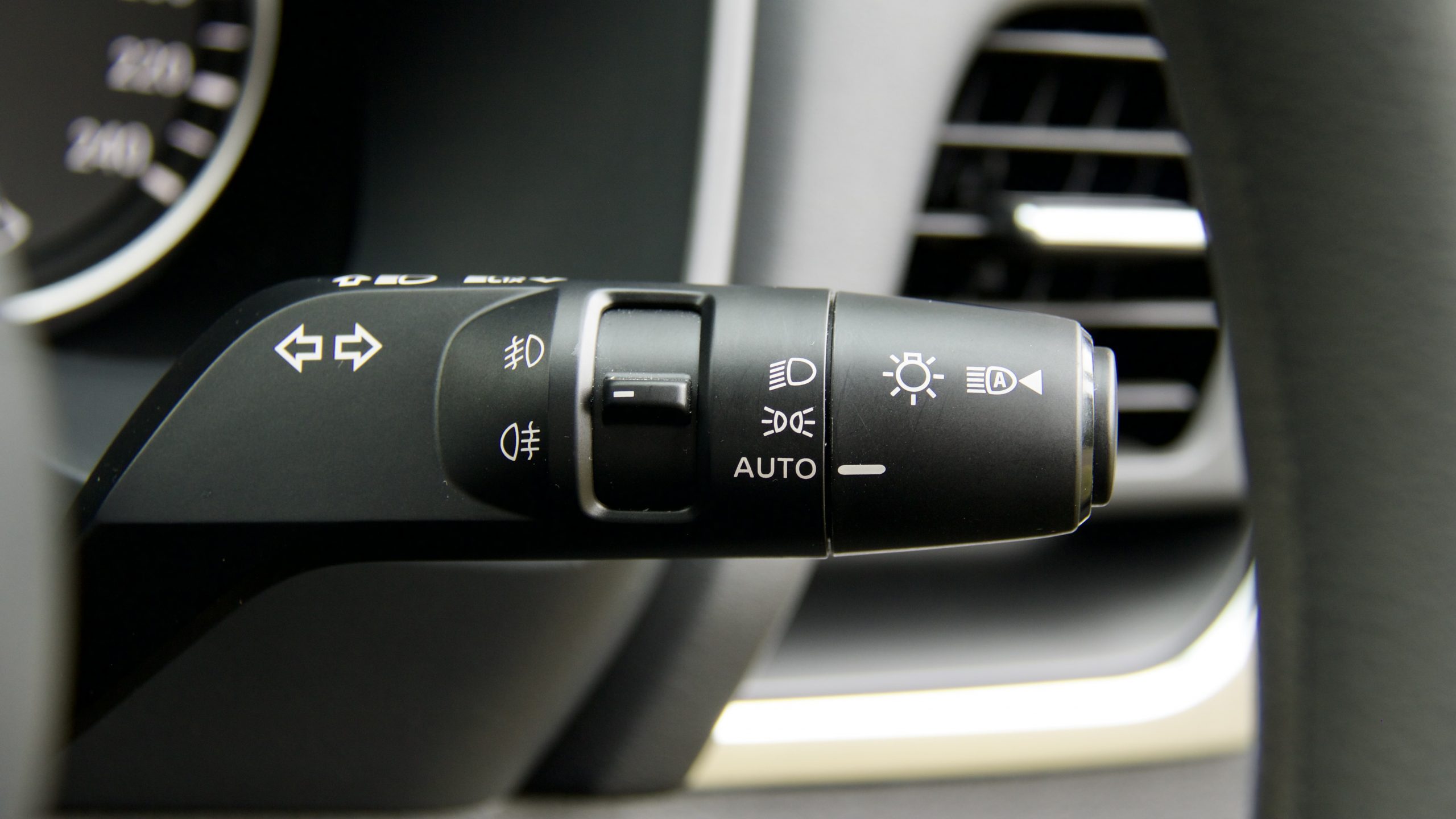
Standard equipment is reasonable for the price, including 18-inch alloy wheels, dusk-sensing automatic LED exterior lighting, auto wipers, manual air-conditioning with rear vents, six-way manually adjustable front seats with driver’s lumbar adjustment, keyless entry and start, heated and auto-folding mirrors, four automatic windows with remote functionality, a 12.3-inch touchscreen with wireless Apple CarPlay and wired Android Auto, satellite navigation, digital radio, a six-speaker sound system, driving modes (eco, sport and normal), four USB ports and LED front and rear fog lights.
Safety kit includes seven airbags, auto emergency braking (AEB) with pedestrian, cyclist and intersection assist, lane keep assist with lane departure warning, adaptive cruise control, blind-spot monitoring with rear cross-traffic alert, auto high beam, rear automatic braking, object movement detection, rear occupant alert, driver attention monitoring, traffic sign recognition, front and rear parking sensors and a 360-degree camera. The Qashqai earned a five-star ANCAP safety rating in 2021.
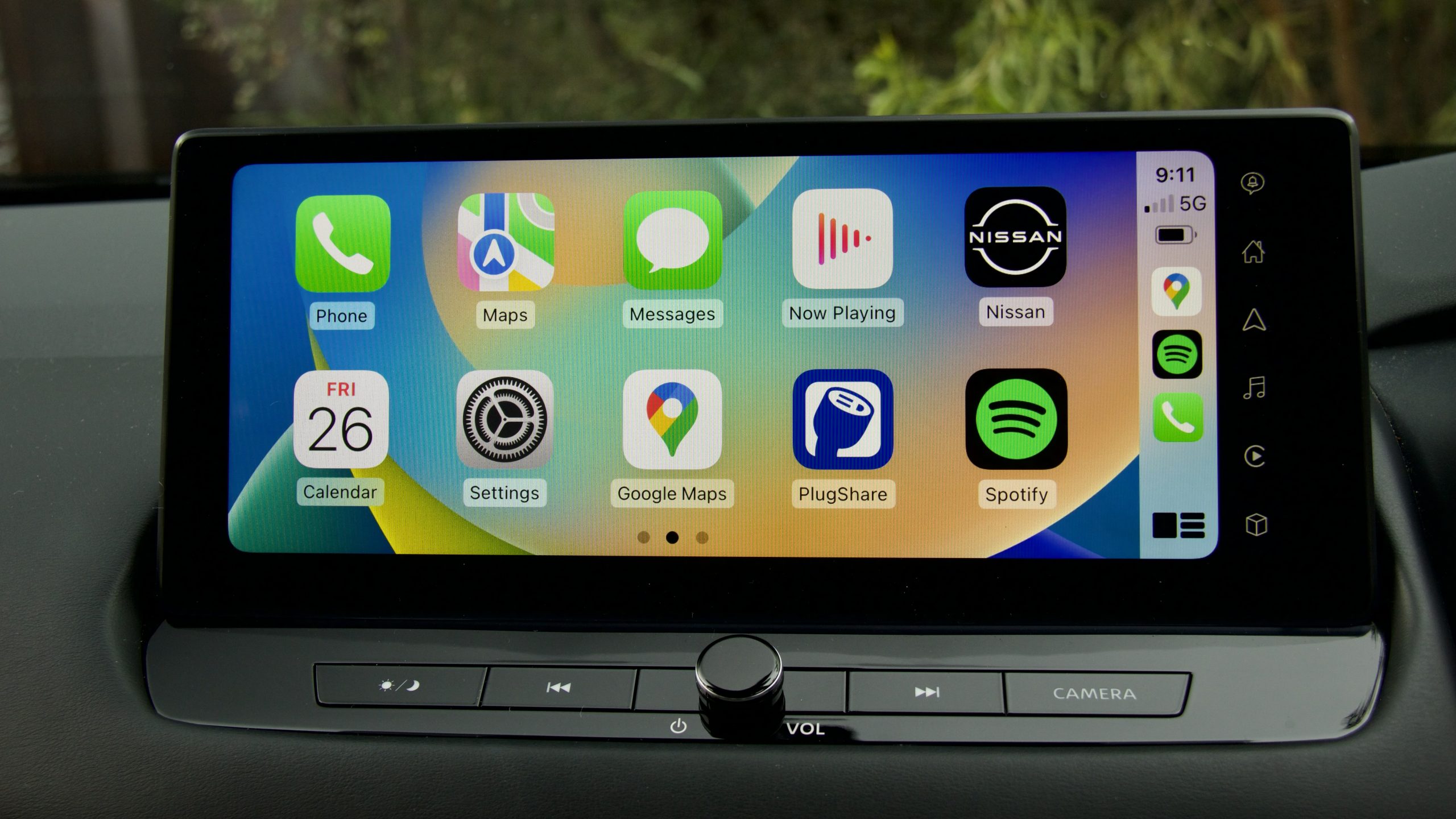
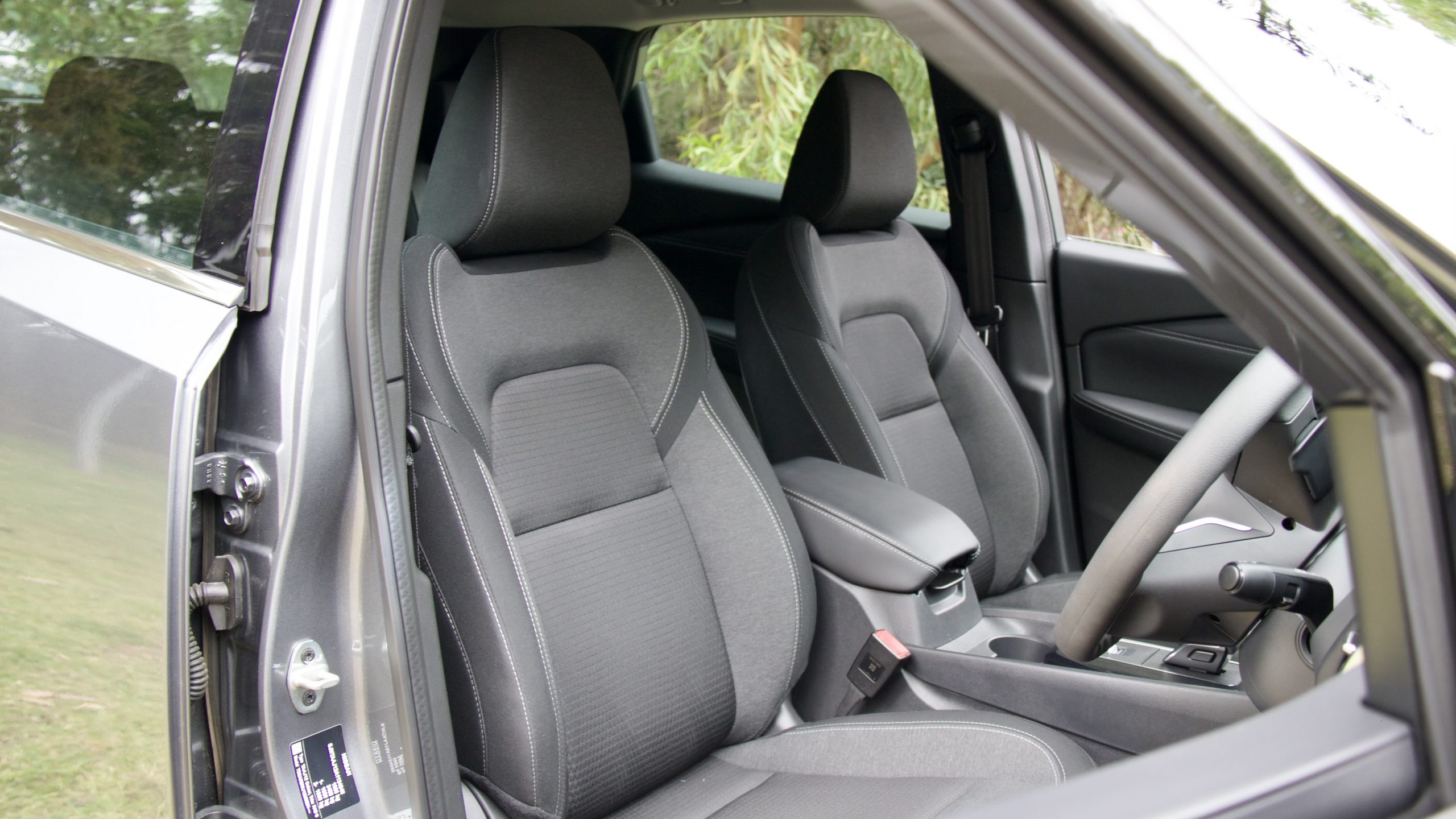
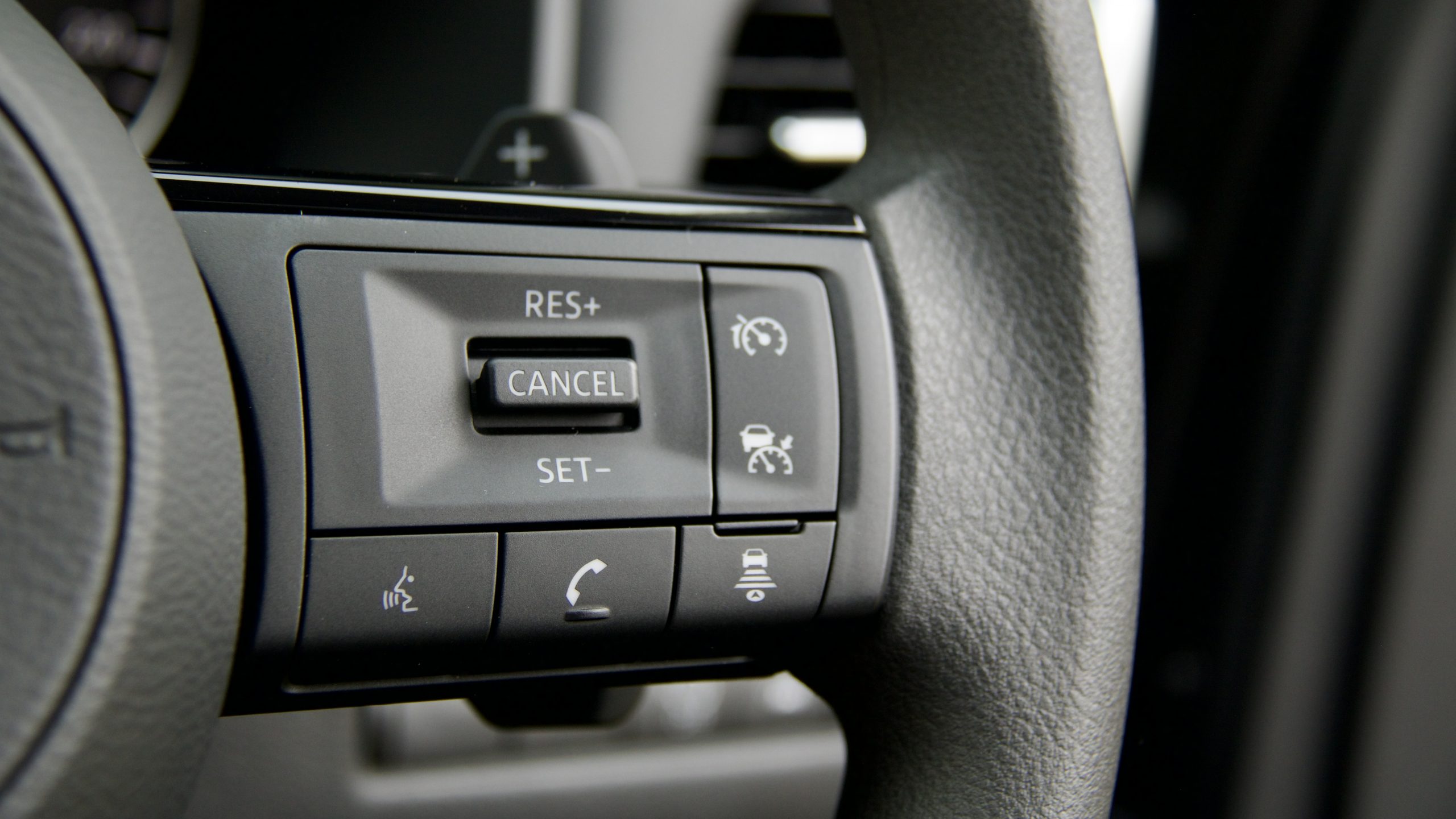
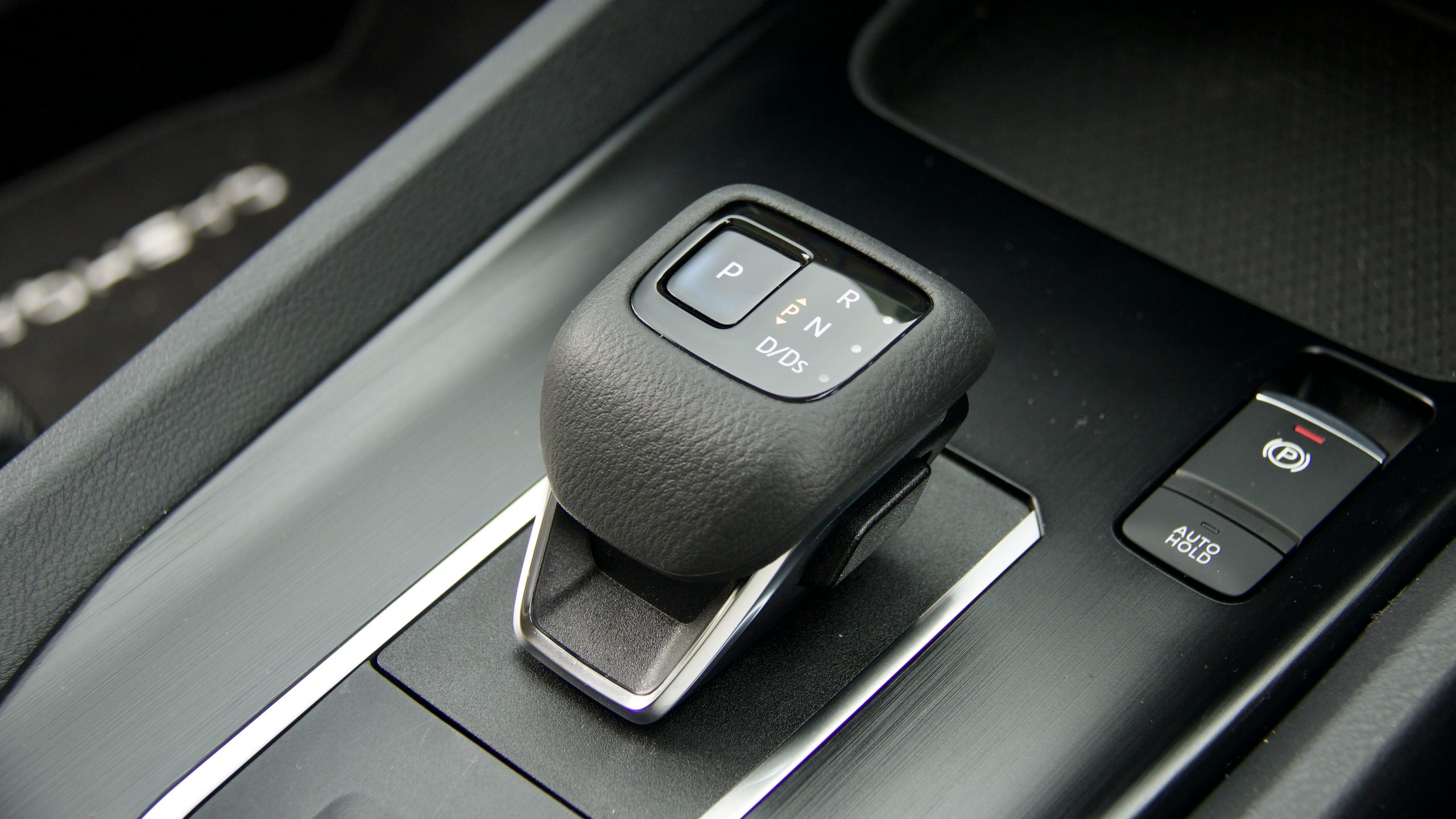
Colour options for the Qashqai ST+ include the no-cost ‘Magnetic Blue’ and $700-optional ‘Fuji Sunset Red’, ‘Burgundy’, ‘Pearl Black’, ‘Ivory Pearl’, ‘Ceramic Grey’, ‘Platinum’ (silver) and our test car’s ‘Gun Metallic’. For an extra $500, a contrasting roof can be had with ‘Pearl Black’ (a grey roof), ‘Magnetic Blue’, ‘Ivory Pearl’, ‘Fuji Sunset Red’ and ‘Gun Metallic’. Black cloth is the only interior option.
There’s a huge selection of rivals to the Qashqai in Australia, and we think that the Kia Seltos Sport+ ($38,490 drive away) and Toyota Corolla Cross GXL petrol (around $41,000 drive away) are its closest rivals. All three cars are front-wheel drive – though the Kia and Toyota have optional all-wheel drive systems with more powerful drivetrains – and use CVT automatic transmissions.
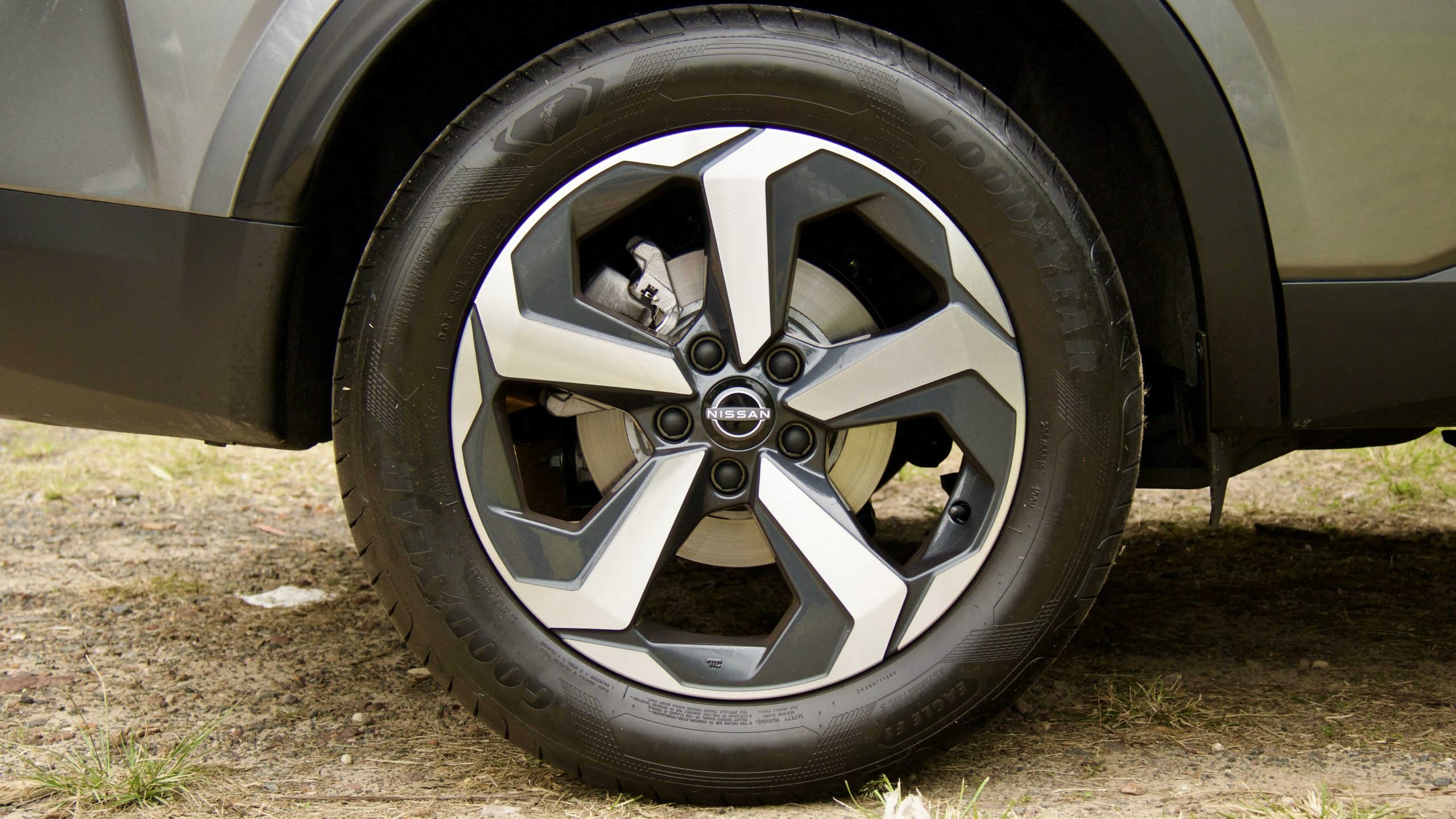
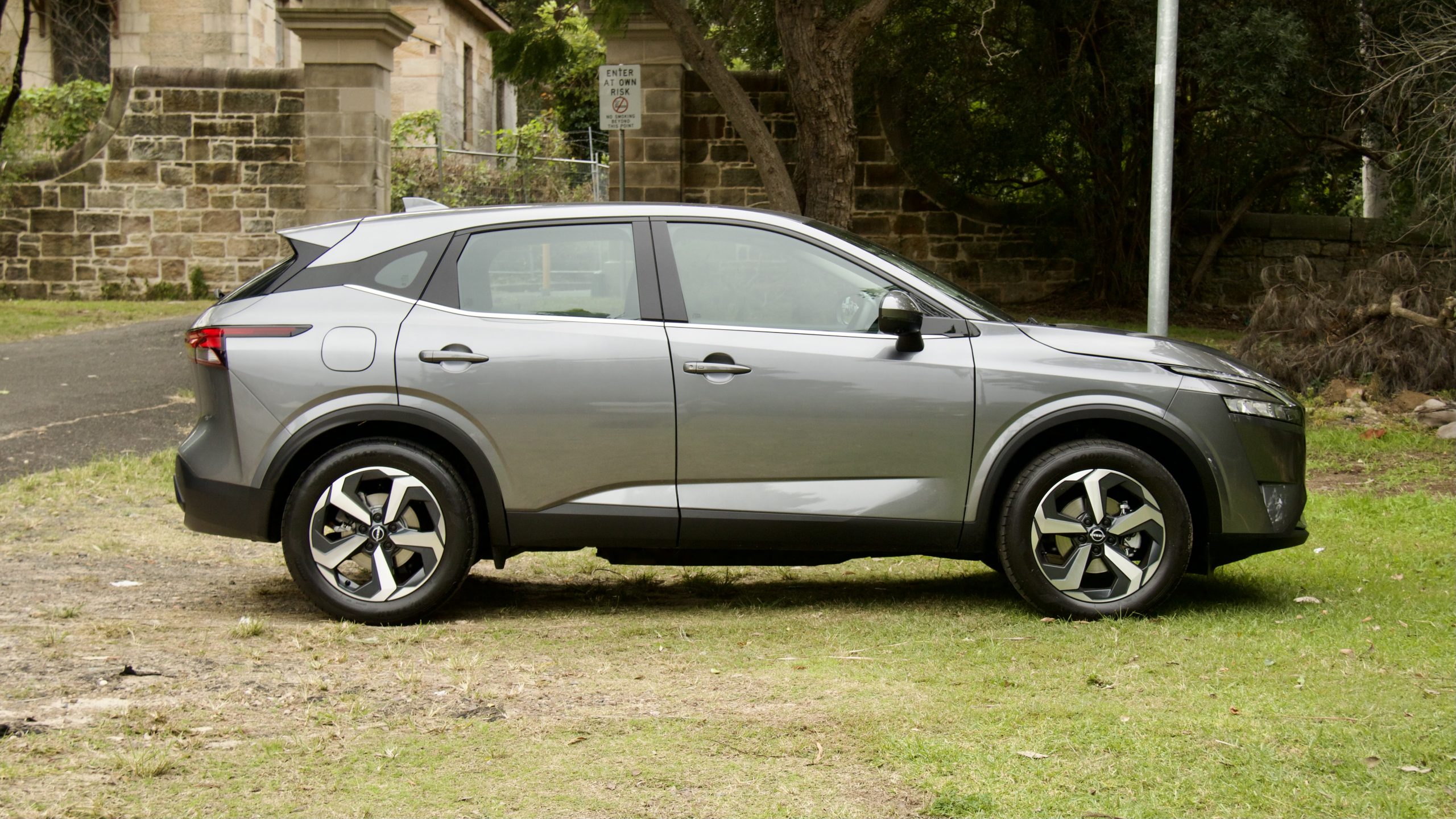
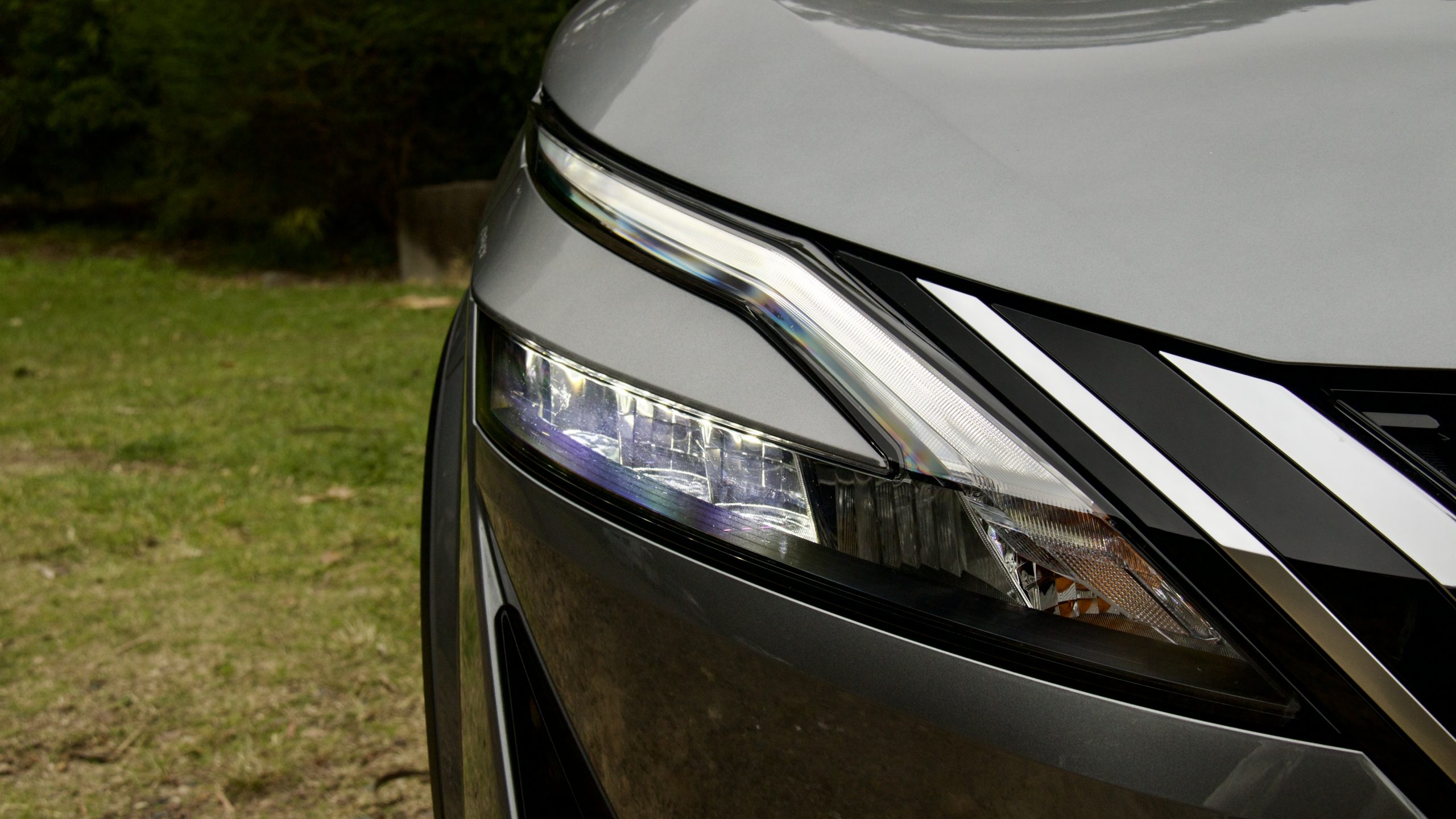
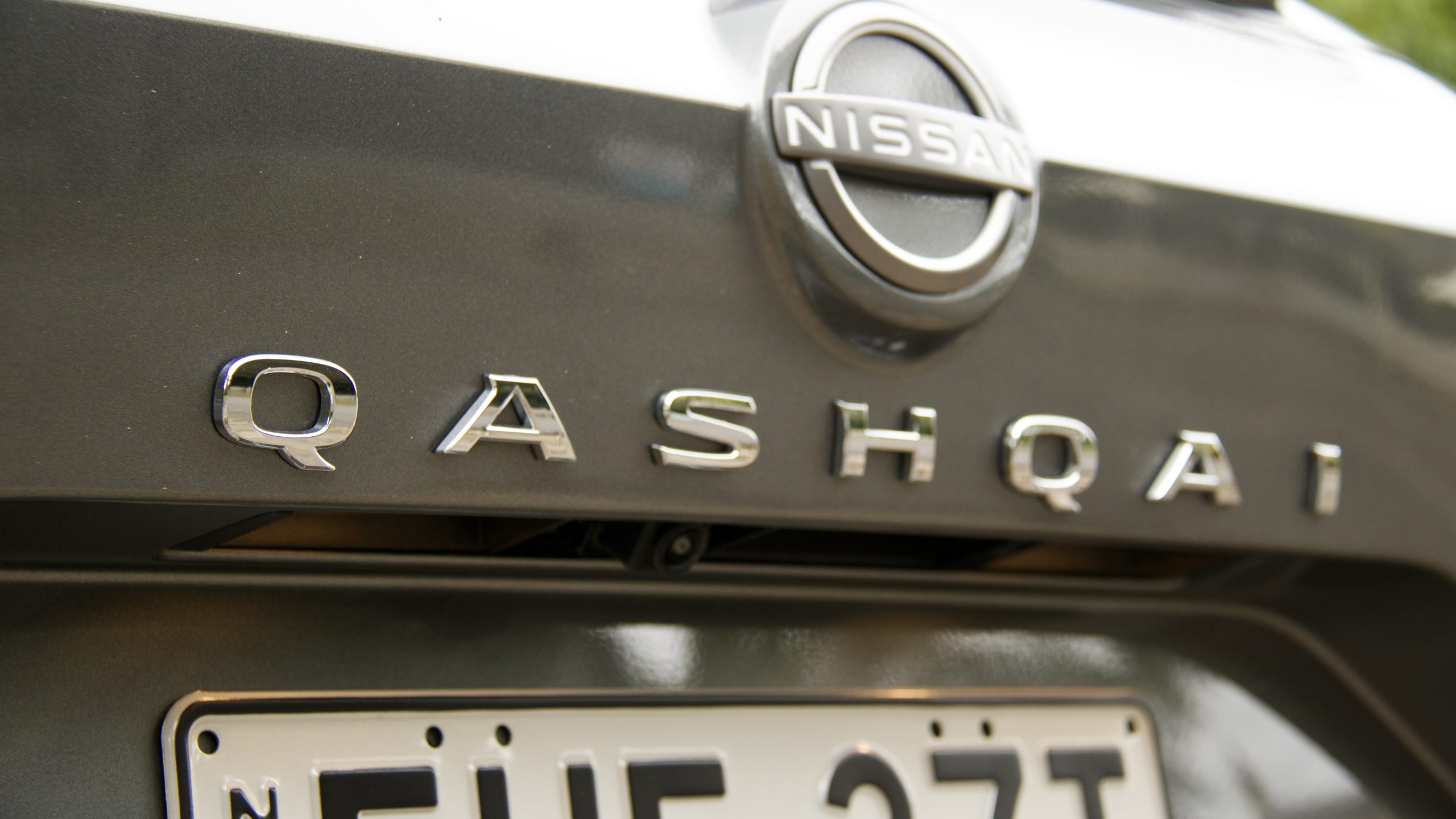
On paper, both the Kia and Toyota appear to be upfront better value than the Qashqai because of their standard equipment. The Seltos in Sport+ 2WD form is $3,000 less expensive than the Qashqai ST+ but has a faux leather steering wheel, climate control, part-leather trim, a digital driver’s display, live services for the infotainment system and lane trace assist. But it’s not quite as clear-cut as that, as the Qashqai adds LED headlights, auto wipers, extra airbags, a 360-degree camera and lumbar adjustment to the Seltos’ standard equipment list.
Against the Corolla Cross GXL, the Qashqai is poorer value for money – the Toyota adds a leather steering wheel, partial leather upholstery, dual-zone climate control, live services for the central touchscreen and a larger 7.0-inch digital driver’s display over the Nissan. Both cost around the same to buy. Overall, we think the Corolla Cross and Seltos are better value than the Qashqai – but adding more features like live services, a dual-level boot floor, a leather steering wheel and climate control to the Qashqai ST+ grade would help its value proposition a lot.
Performance & Economy: 8/10
Under the bonnet of the 2023 Nissan Qashqai ST+ is a 1.3-litre turbocharged four-cylinder petrol engine that makes 110kW of power (at 5,500rpm) and 250Nm of torque (between 1,600rpm and 3,750rpm). It’s mated to a CVT automatic transmission and sends power solely to the front wheels. The claimed 0-100km/h sprint time is 8.9 seconds. Both the Seltos and Corolla Cross feature larger but naturally aspirated engines that – in the case of the Corolla Cross – make more power (125kW), but the Qashqai is comfortably torquier than both the Seltos and Corolla Cross.
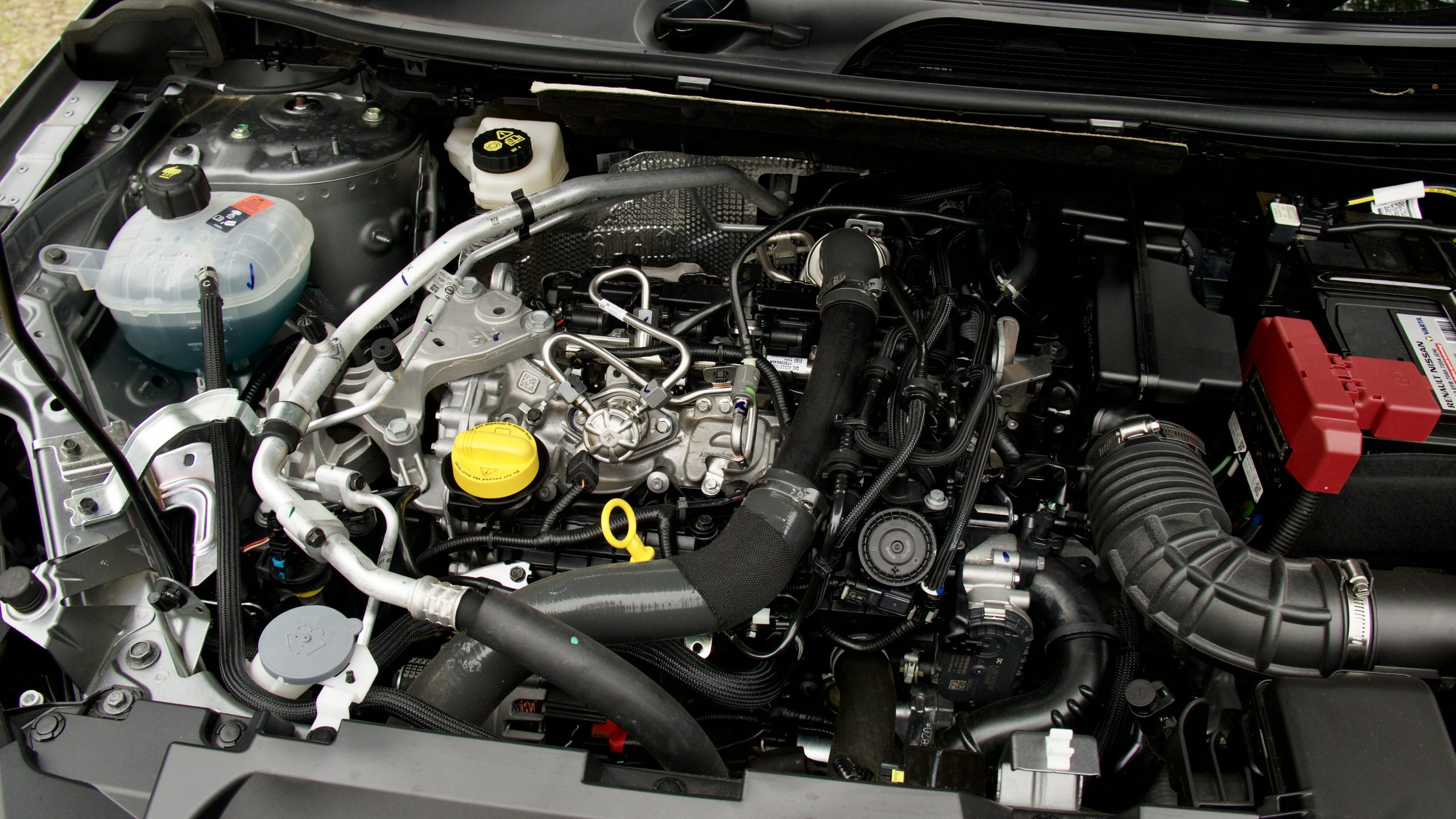
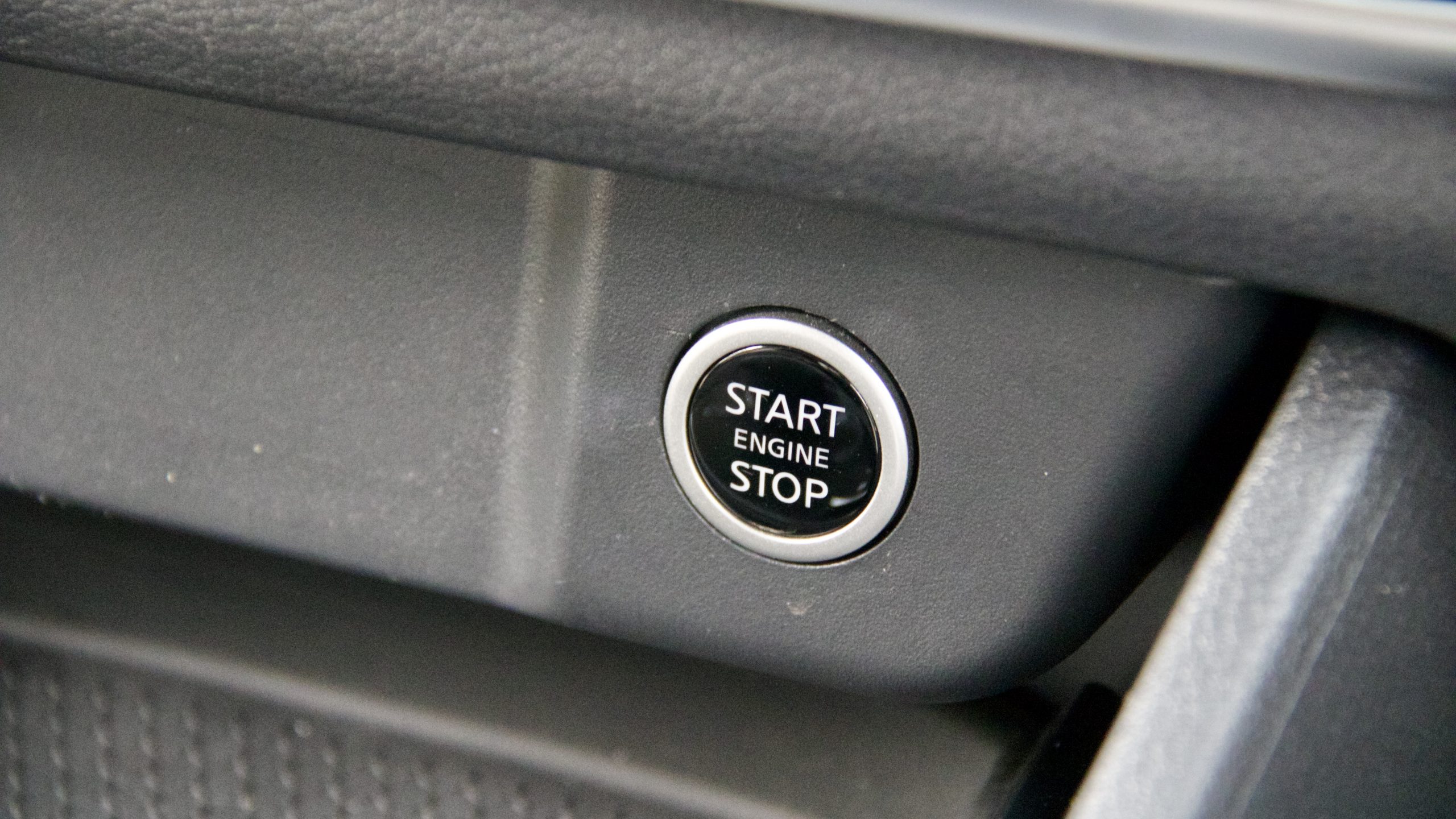
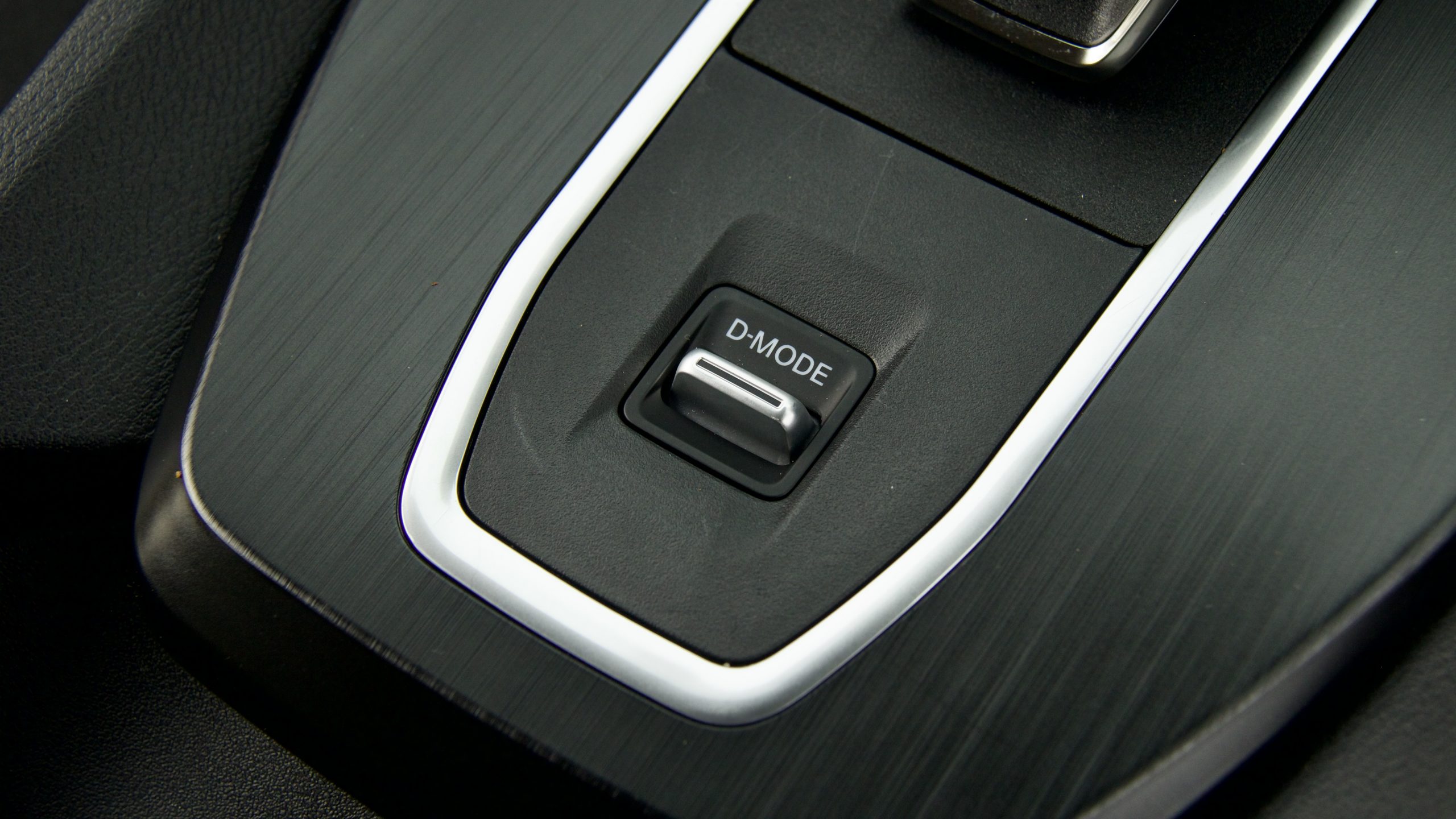
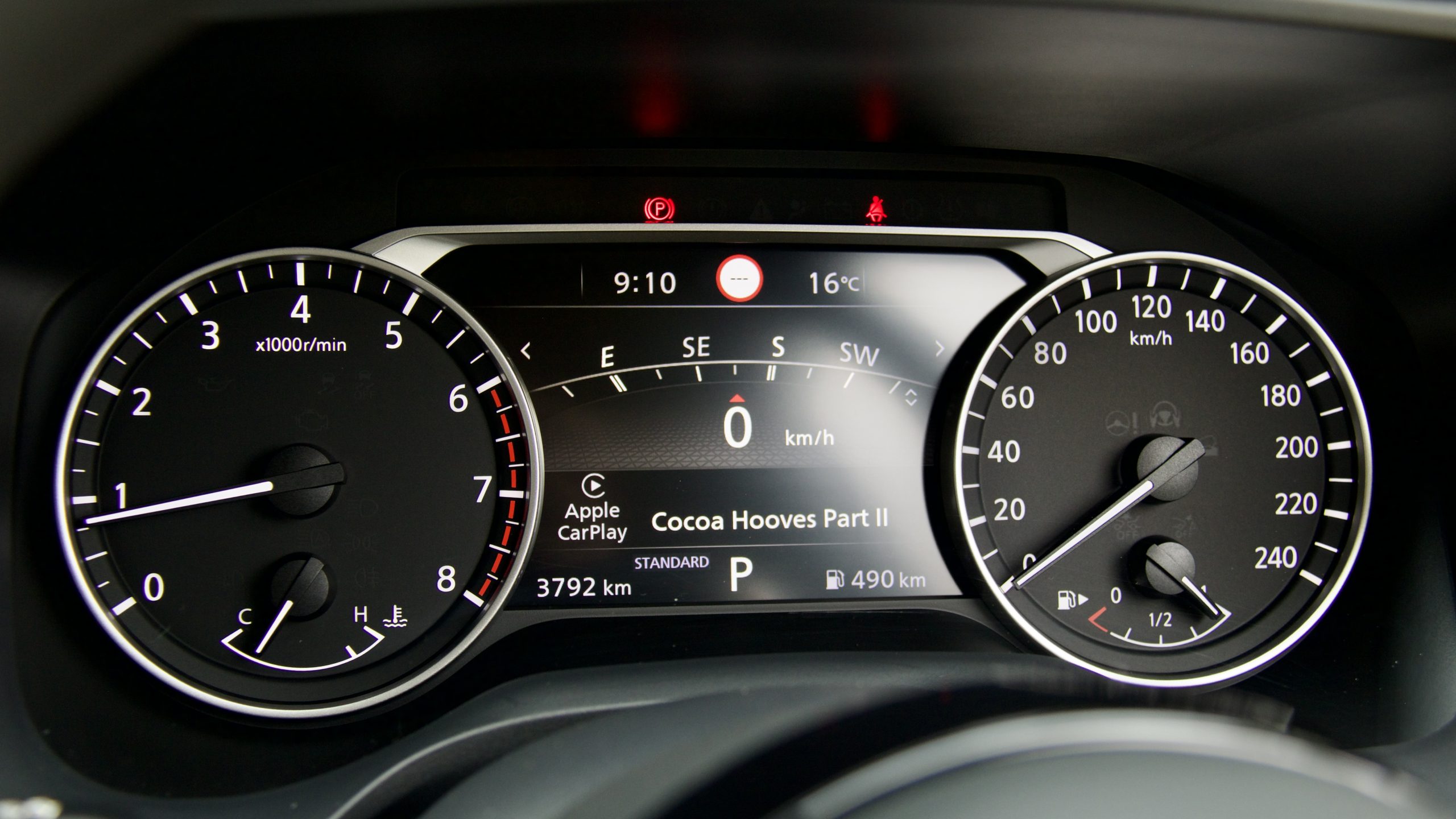
Shared with some Renault and even Mercedes-Benz products, the ‘HR13DDT’ engine in the Qashqai is used across the range – until the incoming ‘e-Power’ hybrid arrives soon – and is a big improvement on the old 2.0-litre naturally aspirated engine in the last generation Qashqai. It makes only 4kW more power than the engine it replaced, but a big 50Nm more torque, which arrives far lower in the rev range too. The new engine is also a lot quieter than the old one, and compared with the loud engines in the Seltos and Crosstrek, it feels refined and almost luxurious.
The only available transmission in the Qashqai range is a CVT automatic with stepped ratios for more of a torque converter automatic transmission feel. It’s a big improvement on Nissan CVTs of the past thanks to the aforementioned stepped ratios, and aside from a bit of typical CVT drone from a standstill while waiting for the turbo to kick in, it’s very smooth and inoffensive. You can shift it manually using the paddle shifters, and unlike a lot of CVTs, they do make a meaningful difference.
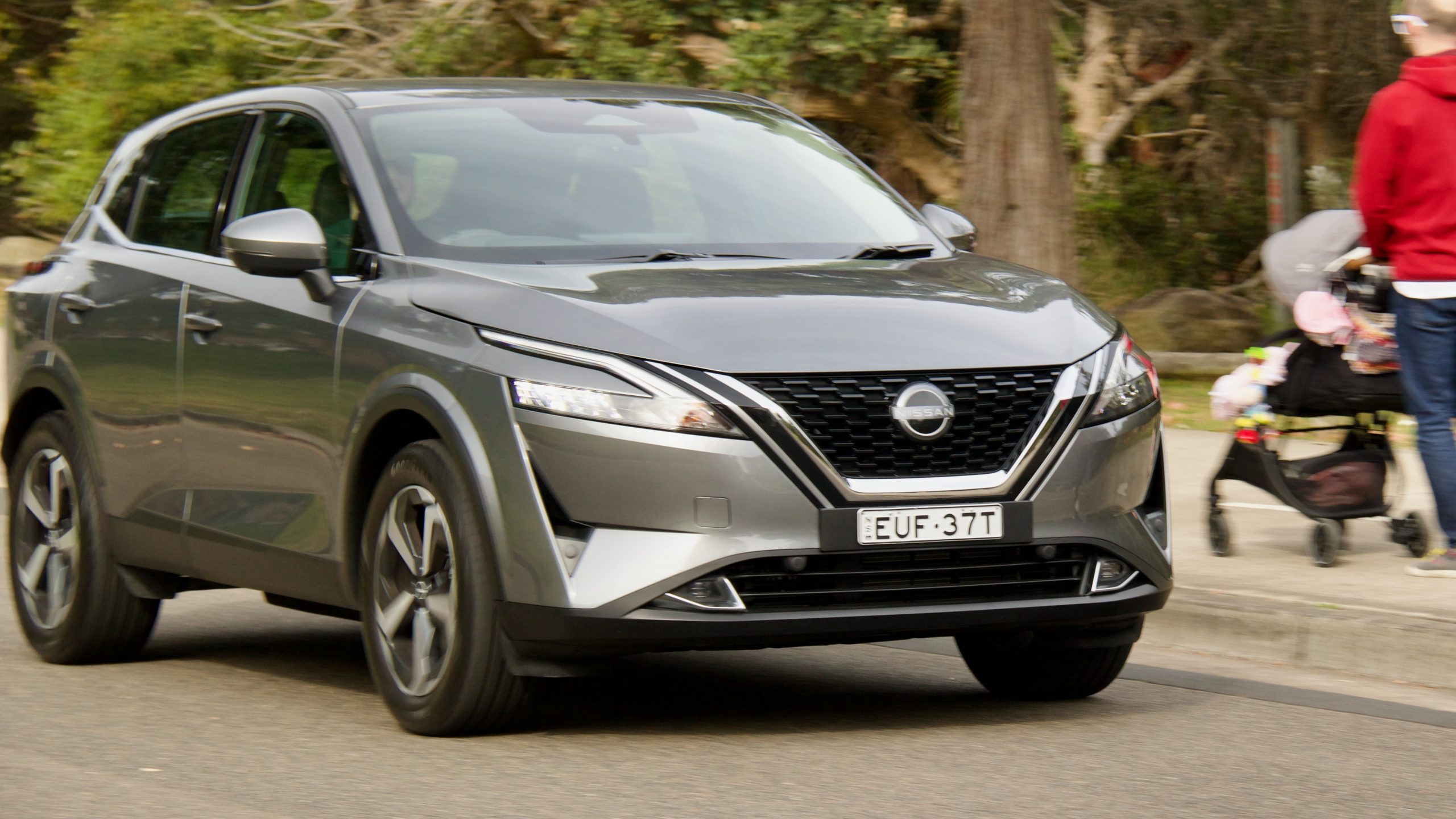
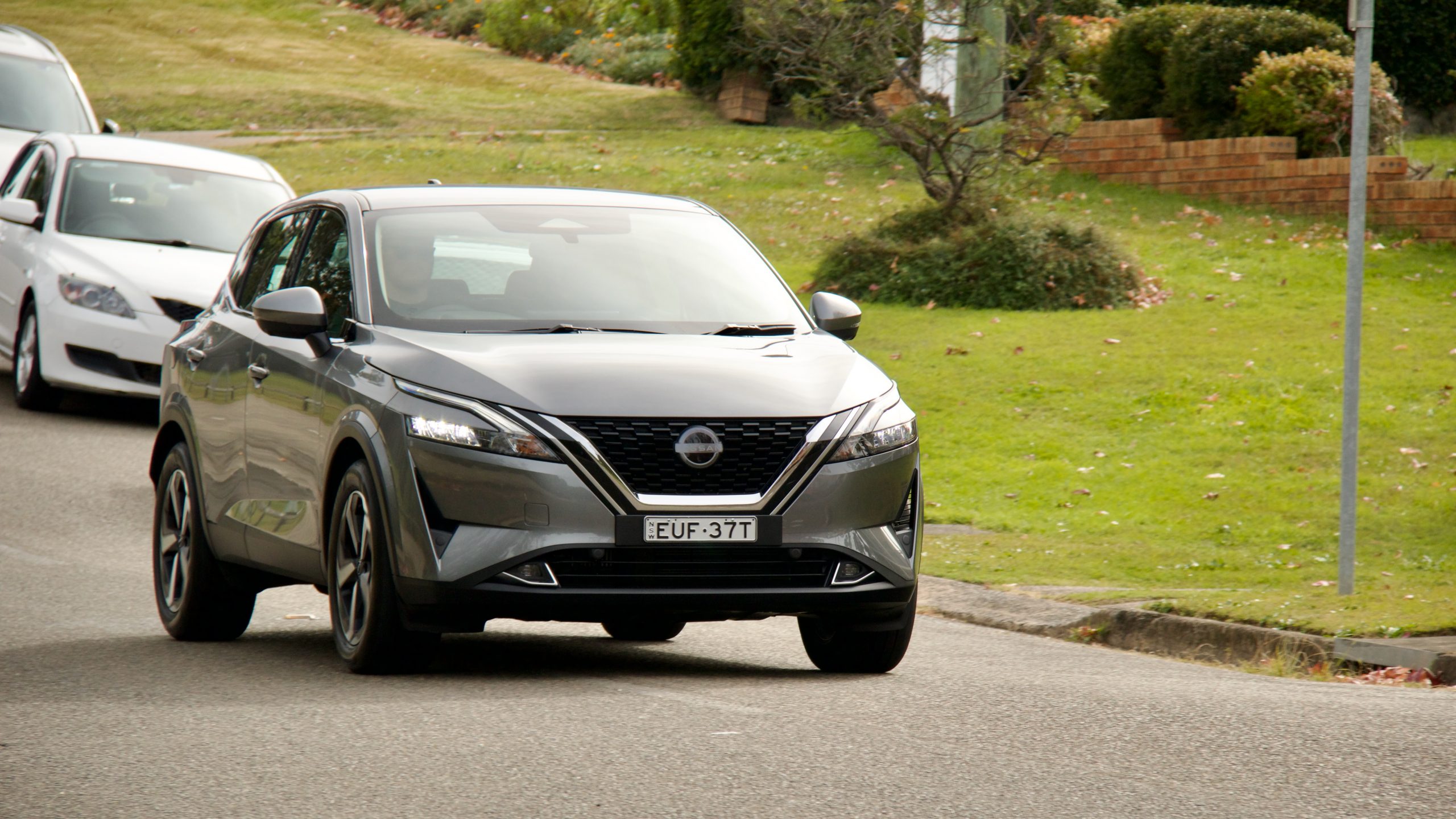
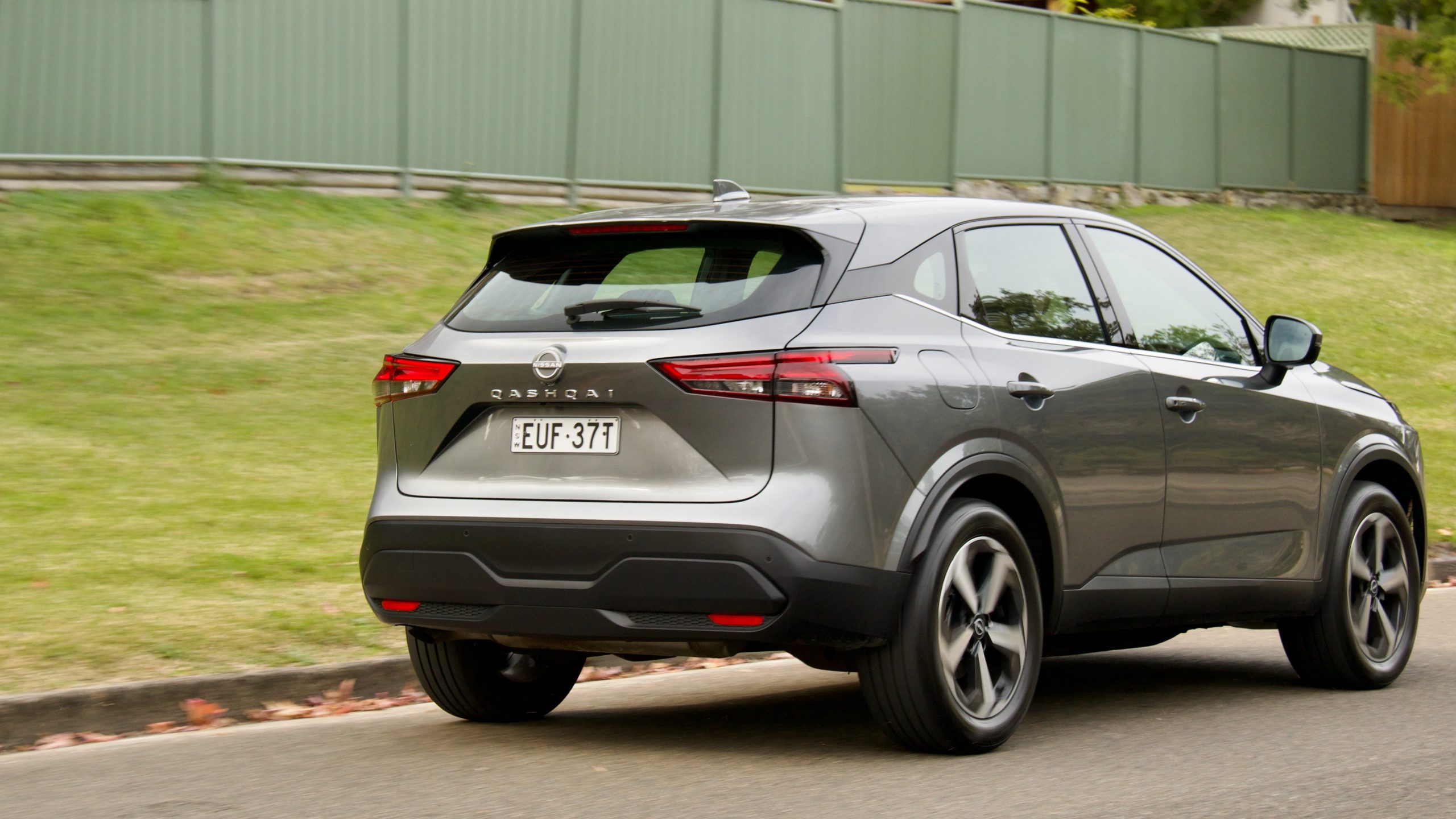
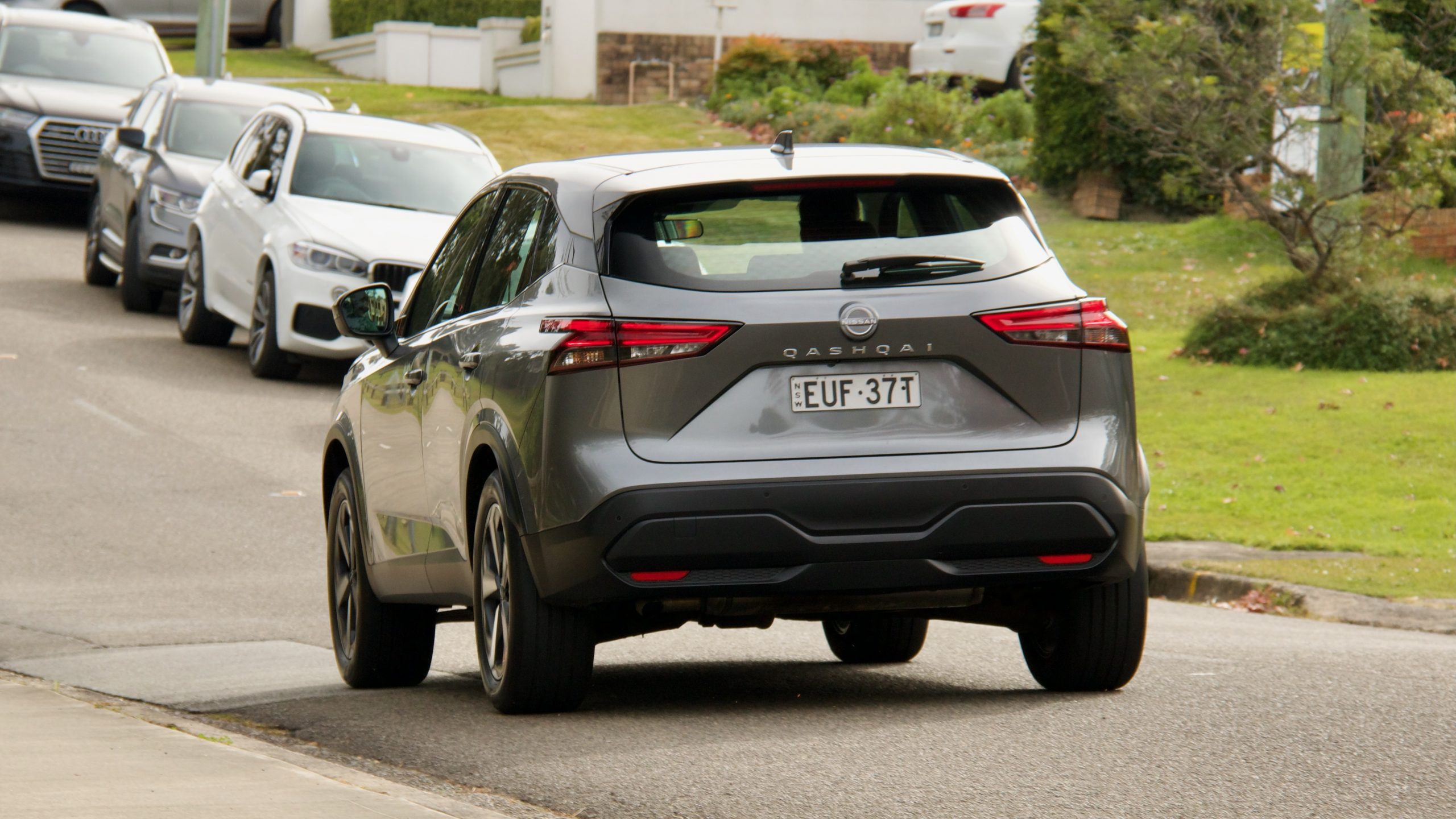
The claimed combined fuel consumption for the 2023 Nissan Qashqai ST+ is 6.1L/100km (versus 6.9L/100km for the Seltos and 6.0L/100km for the Corolla Cross petrol) with CO2 emissions rated at 138g/km. In our testing, we achieved 8.6L/100km in mostly urban driving. Unlike the Seltos and Corolla Cross, the Qashqai runs on a minimum of 95RON premium unleaded and it has a 55-litre fuel tank.
Ride & Handling: 9/10
Although it again sits on the same ‘CMF-CD’ platform as the larger X-Trail and its Renault Koleos and Mitsubishi Outlander siblings, the 2023 Nissan Qashqai ST+ drives quite maturely – though, it still offers a surprising amount of fun from behind the wheel. We immediately noticed how well the Qashqai rides, even considering the smaller 18-inch wheels of the ST+. It takes bumps quite well and though it can be a touch firm, the trade-off is great body control and fun handling.
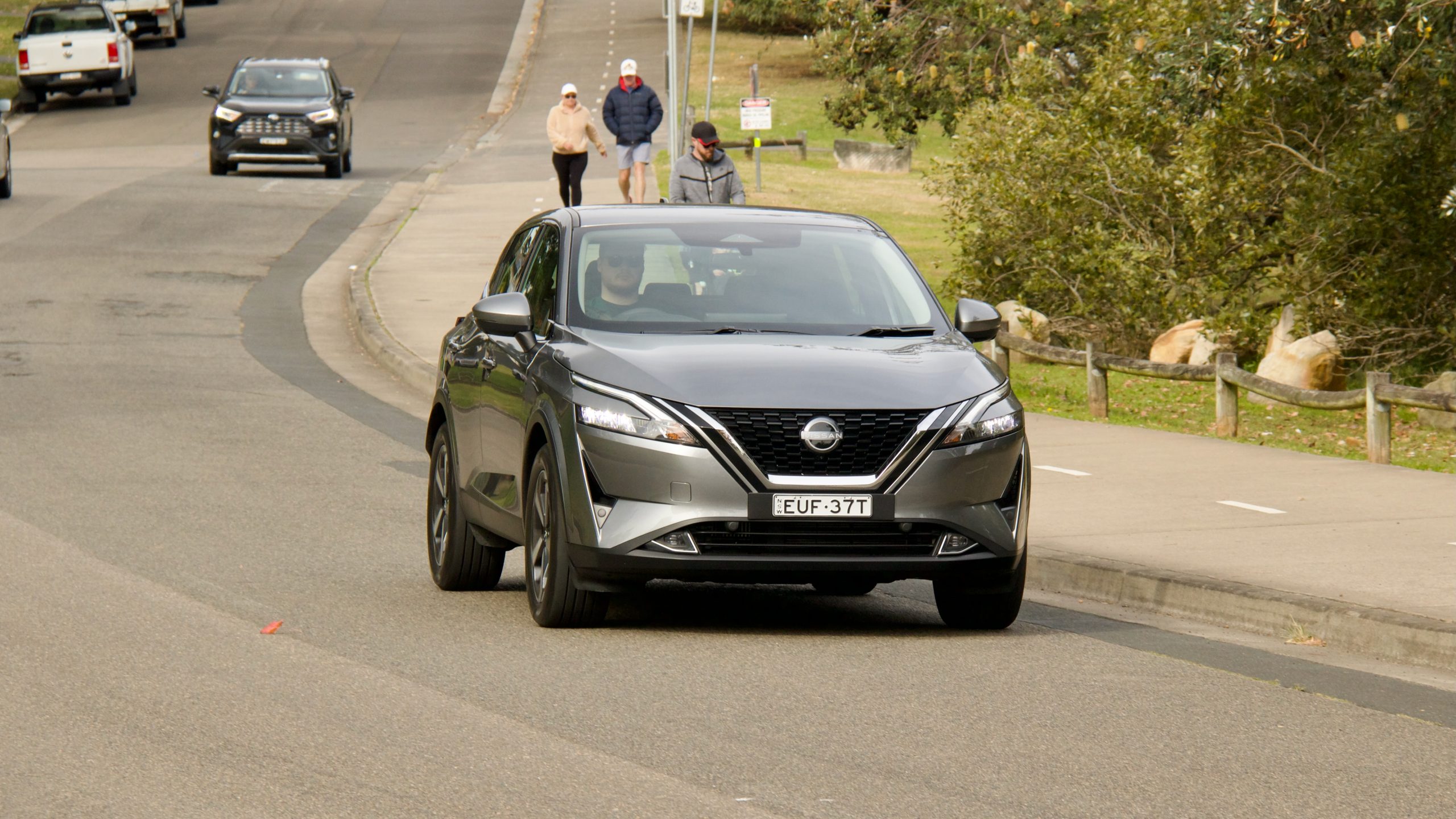
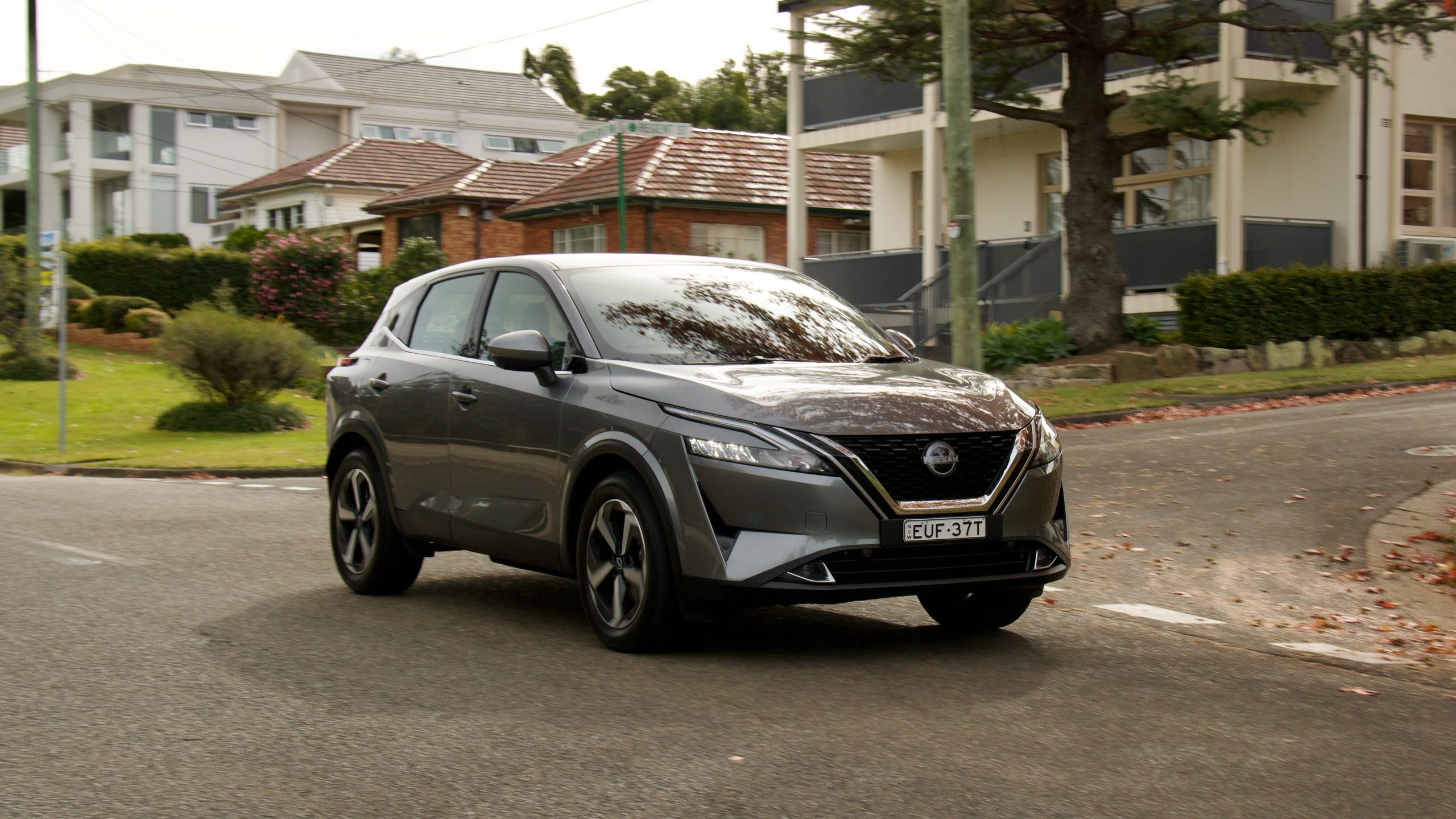
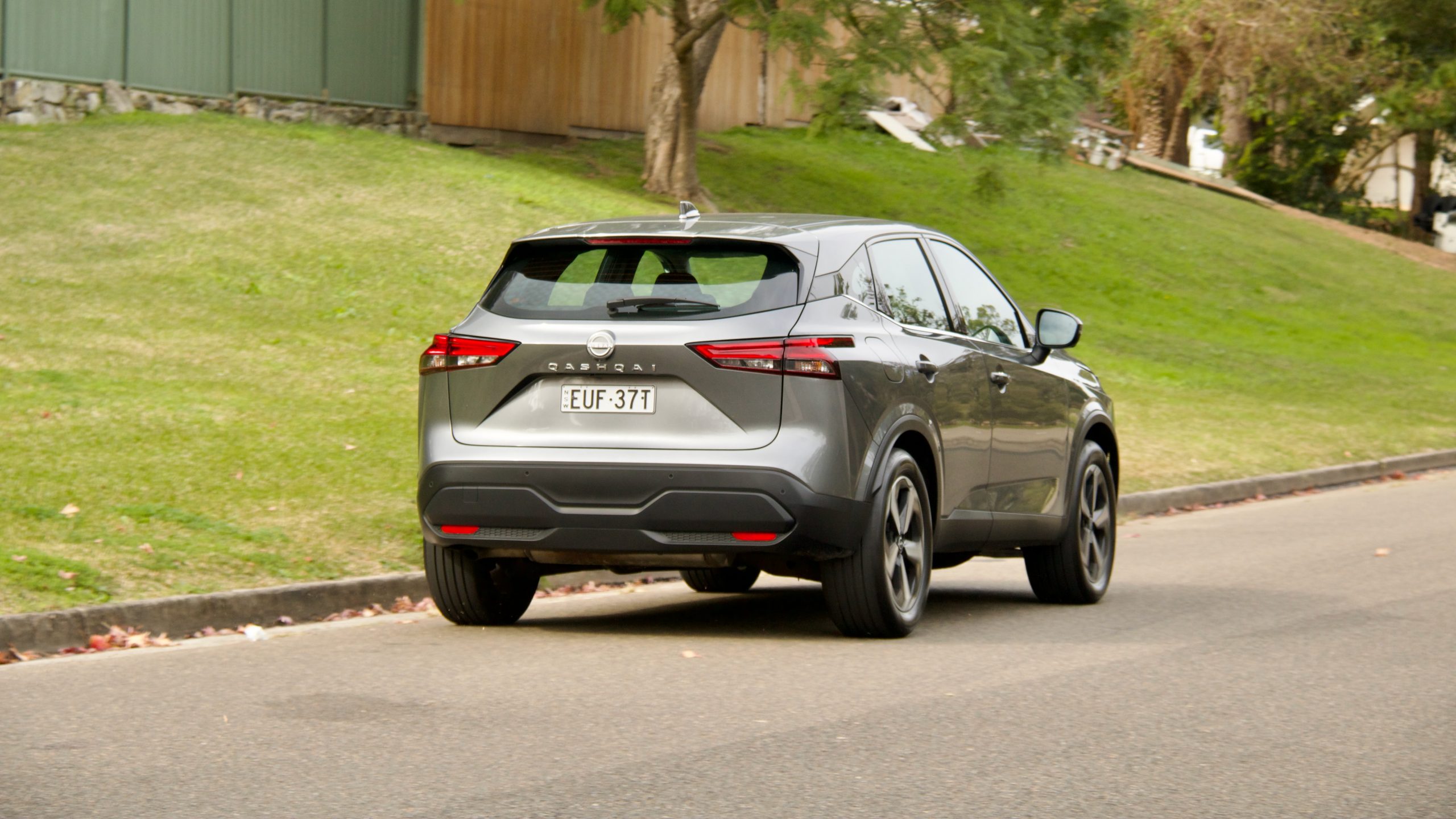
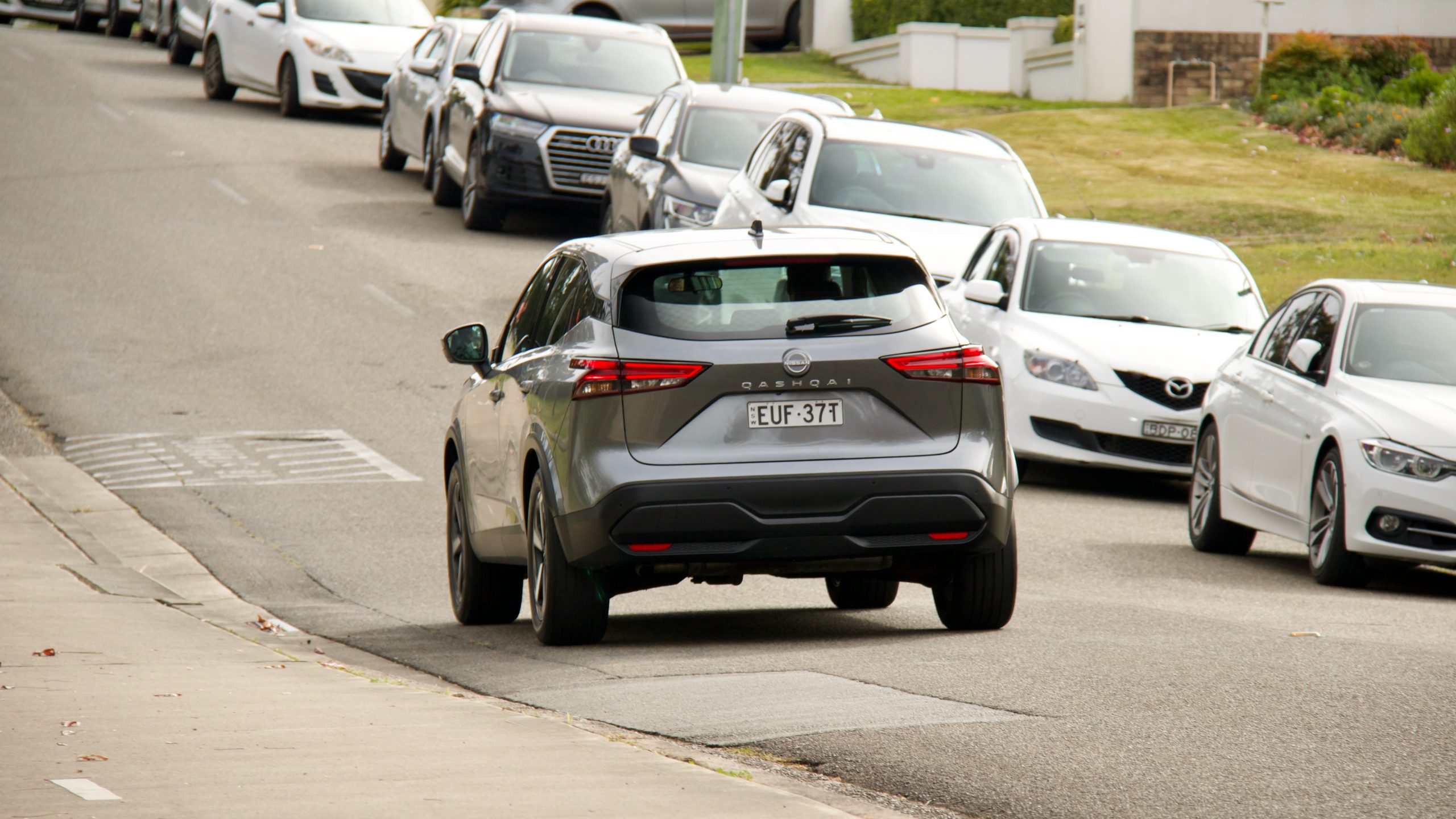
The steering is a touch light, but it’s quick from centre and emphasises the fun you can have from behind the wheel. The chassis is reasonably taut and it feels pretty light on its feet as well. Road noise levels are reasonably low for the segment, while we quite like Nissan’s active safety systems too. They’re well tuned and nicely subtle – there’s no screaming loud noises, instead, just some calm beeps. The 360-degree camera is quite handy, though its quality could be better.
Interior & Practicality: 8.5/10
While the interior of the last-generation Qashqai was good quality, it wasn’t that remarkable to look at – but thankfully, the new car’s interior is more visually appealing, it features even better quality and it’s quite practical too. The cabin inside the Qashqai’s interior is impressive with lots of soft touch materials – the upper dashboard is covered in thick soft touch plastics, while the dashboard facia has a big portion of stitched faux leather.
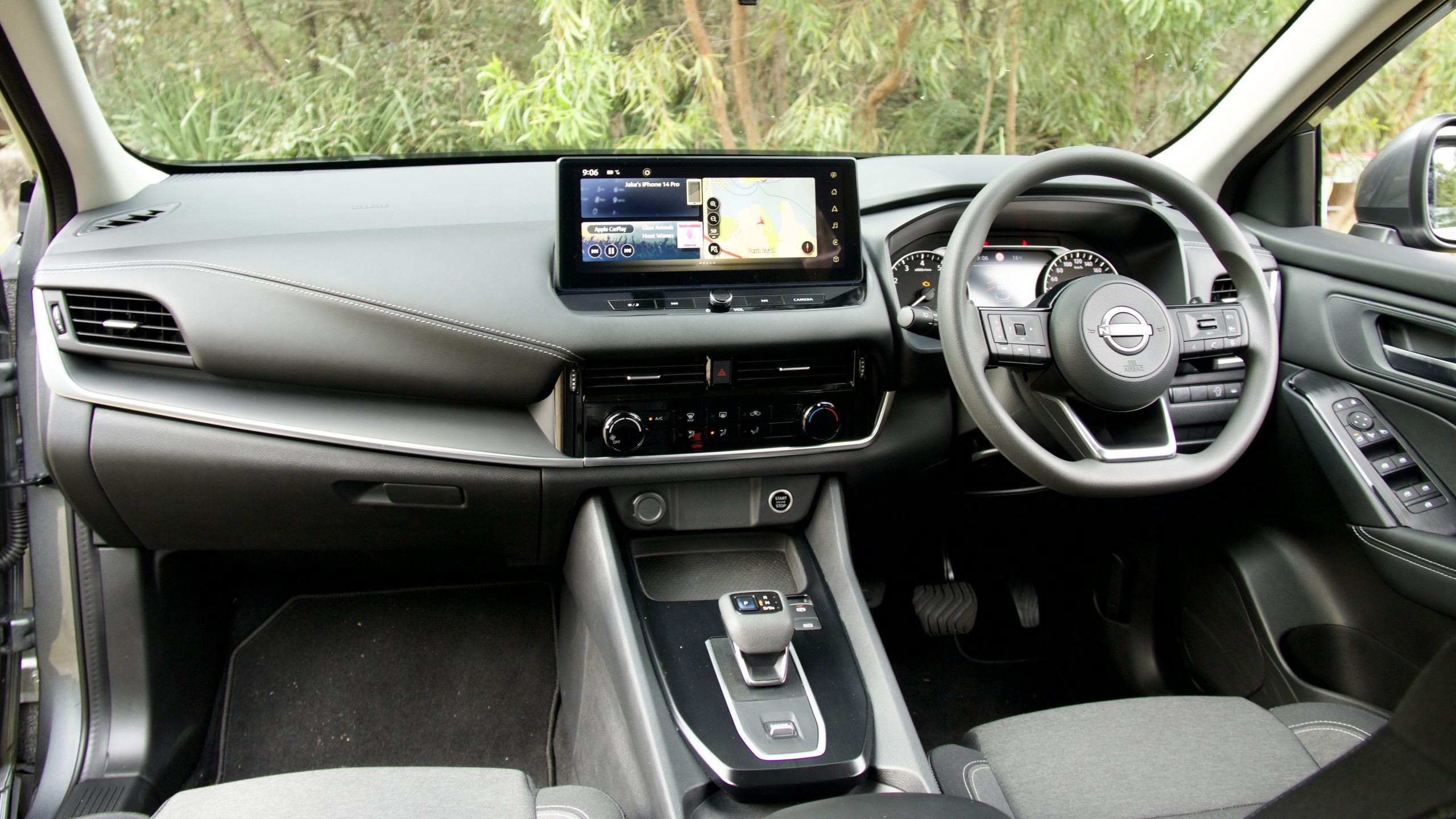
One cabin faux pas, however, is the urethane steering wheel – you don’t even get a leather steering wheel on the ST+ for over $41,000 drive away! A leather steering wheel would make the cabin feel even better as the steering wheel is likely the most frequently touched surface in a car.
Centre of the cabin is a 12.3-inch touchscreen that’s well featured with wireless Apple CarPlay and wired Android Auto, satellite navigation and digital radio – though no live services functionality for over-the-air updates, smartphone app capability or live traffic for the navigation. The screen is quite easy to use, and it’s a big step up on previous Nissan products. We also quite like how it has shortcuts on the driver’s side of the screen that add another level of functionality to the cabin.
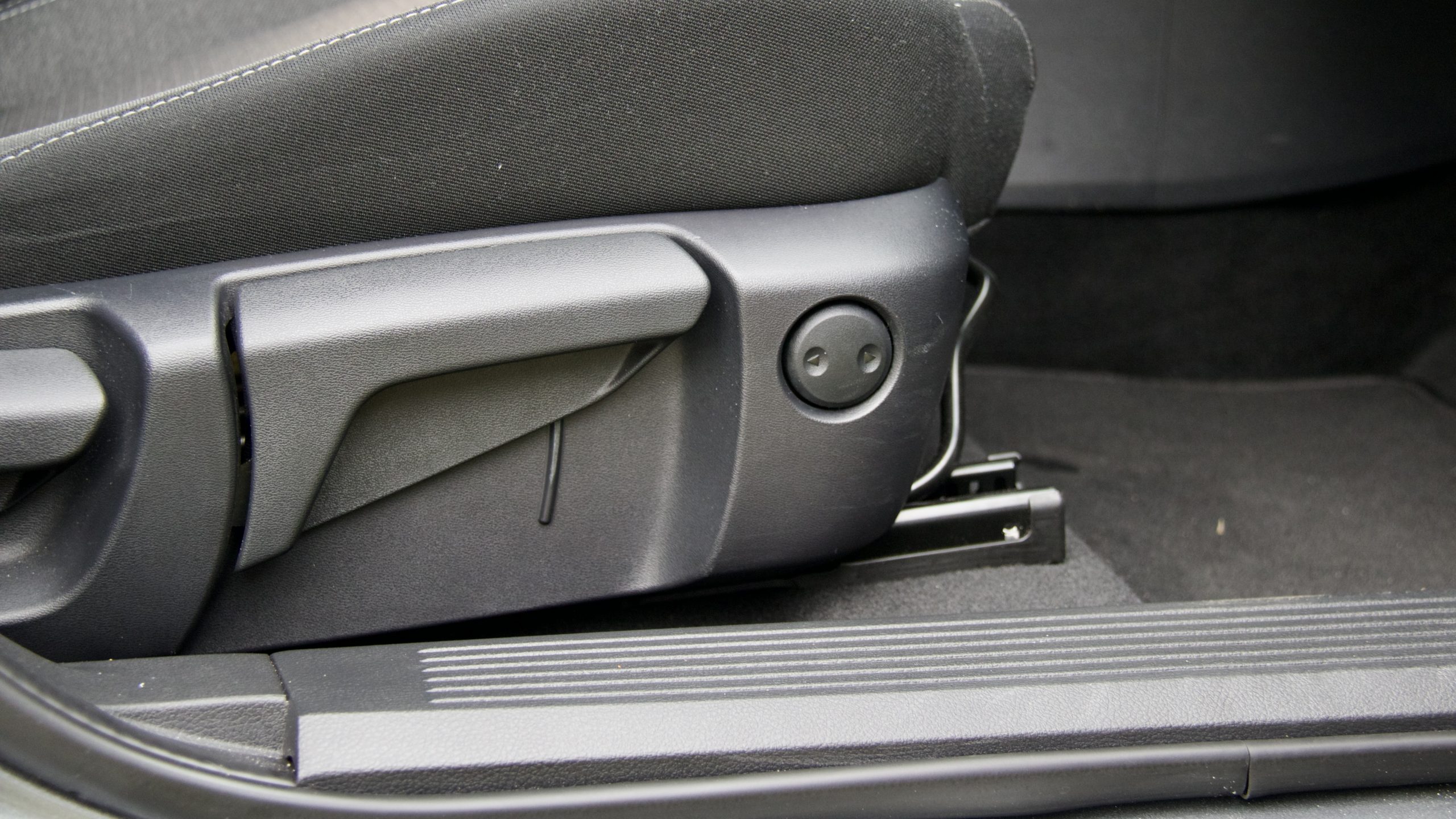
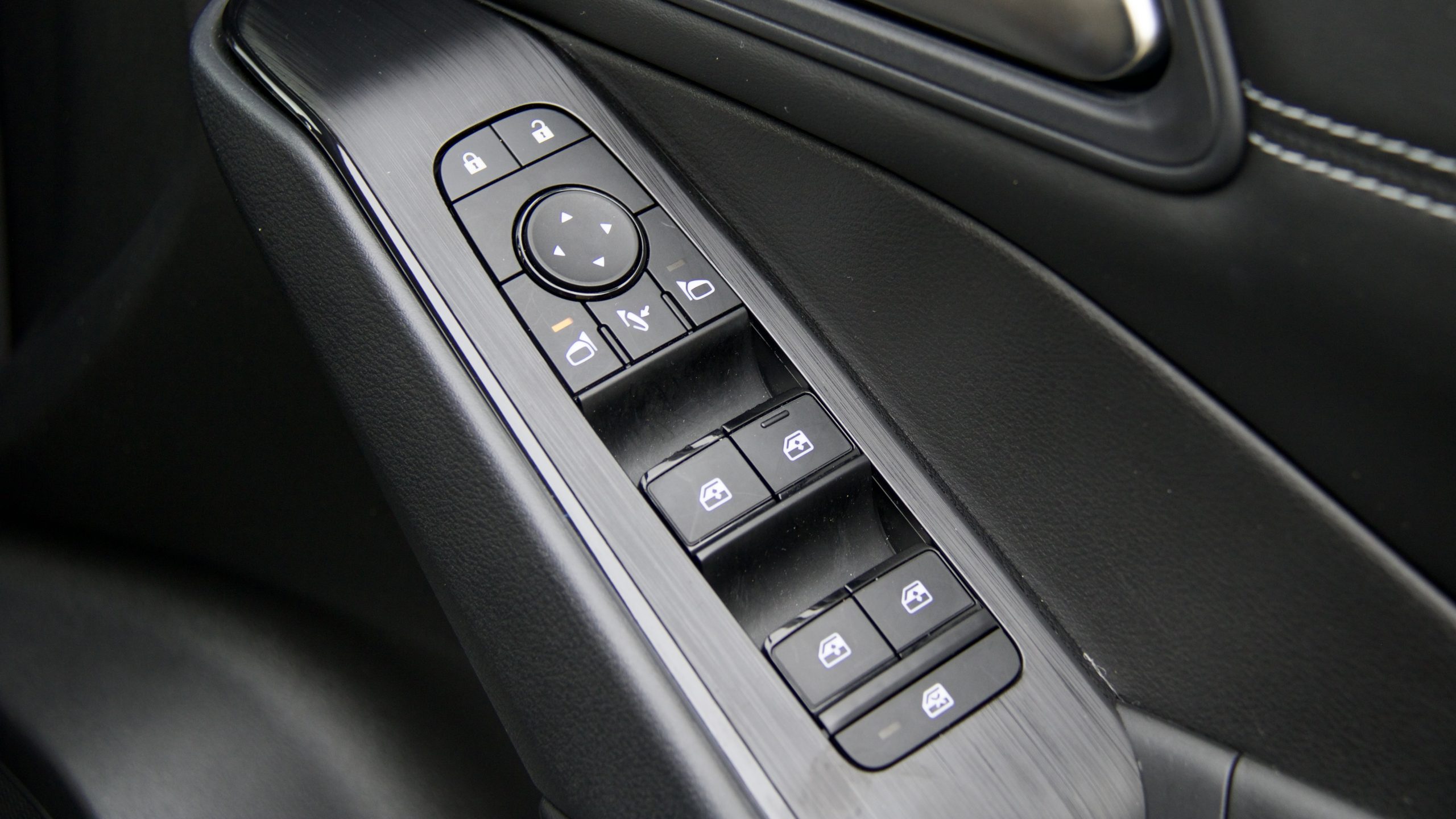
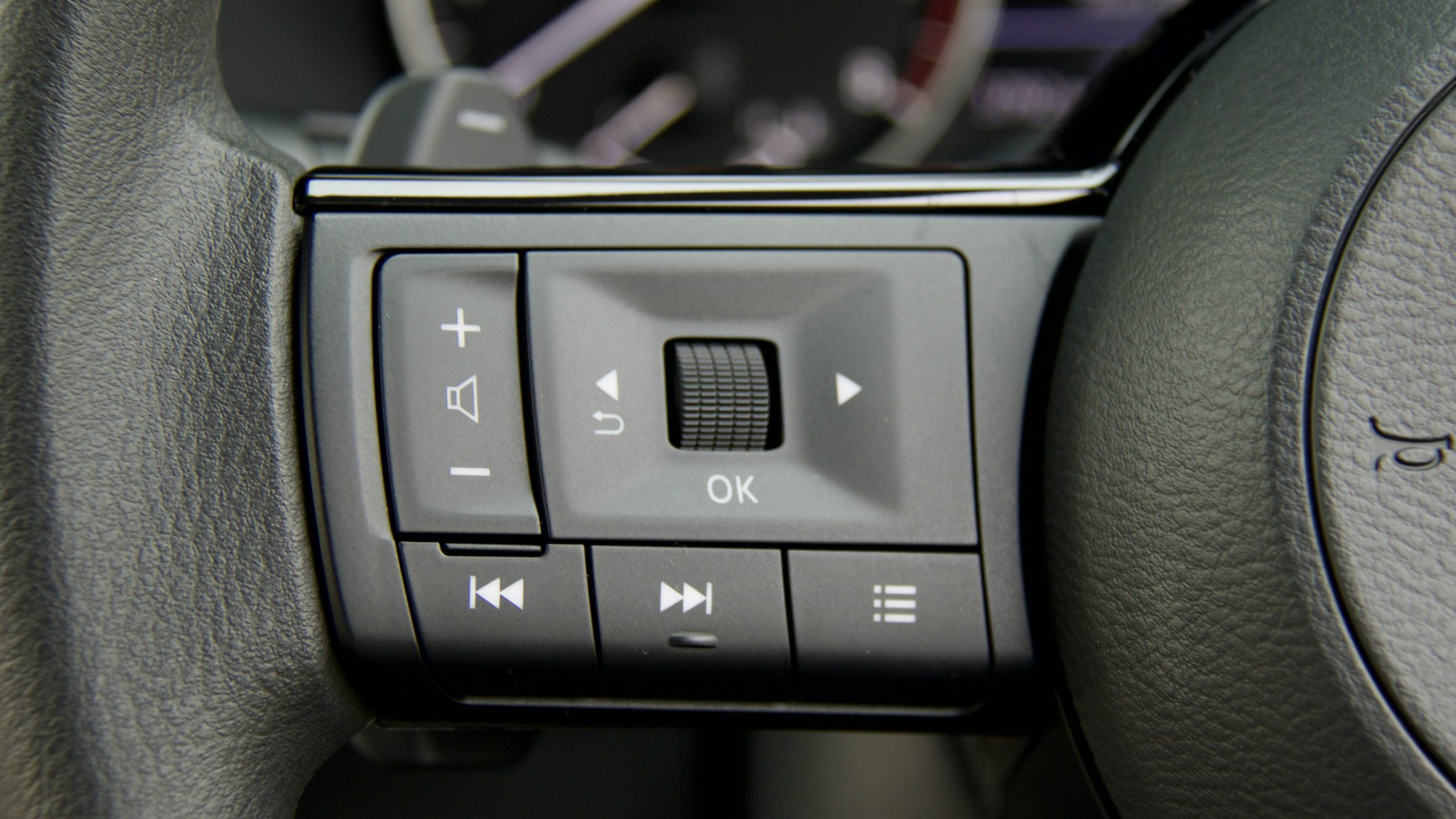
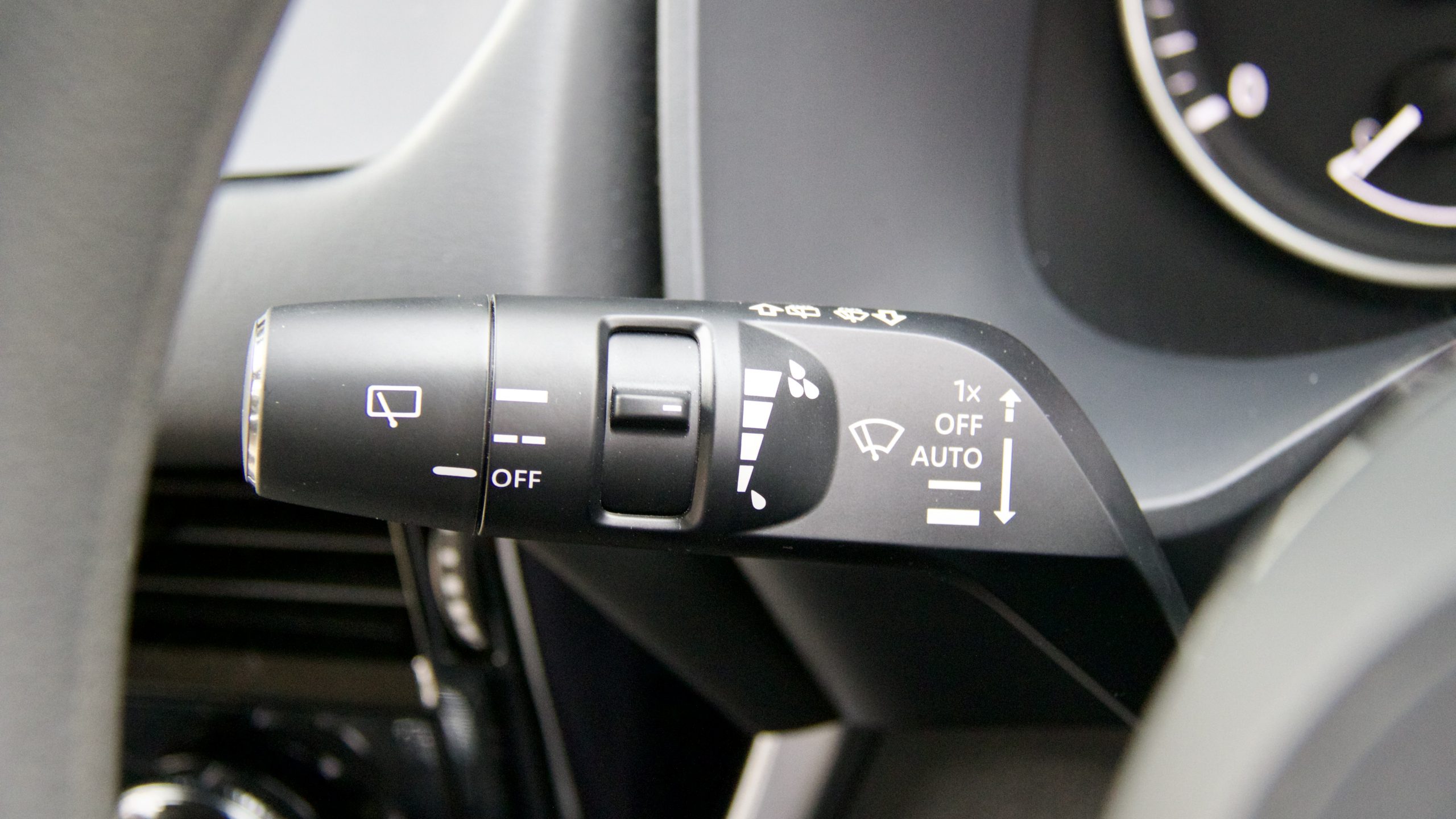
Speaking of functionality, we quite like how easy to use and ergonomic the Qashqai’s cabin is. All the buttons are where you’d expect them to be, the functions are clearly labelled and easy to find. It’s also a practical cabin with a big centre box, a nicely sized tray area in the centre console, reasonable cup holders within close reach of the driver, a big glovebox and reasonable door pockets as well.
The rear seat of the Qashqai is a good space for the segment with reasonable space for six-footers, as well as a good set of features including map pockets, door pockets, a centre armrest with cup holders, air vents and two USB ports to charge devices. There are also two ISOFIX points and three tether points for child seats as well.
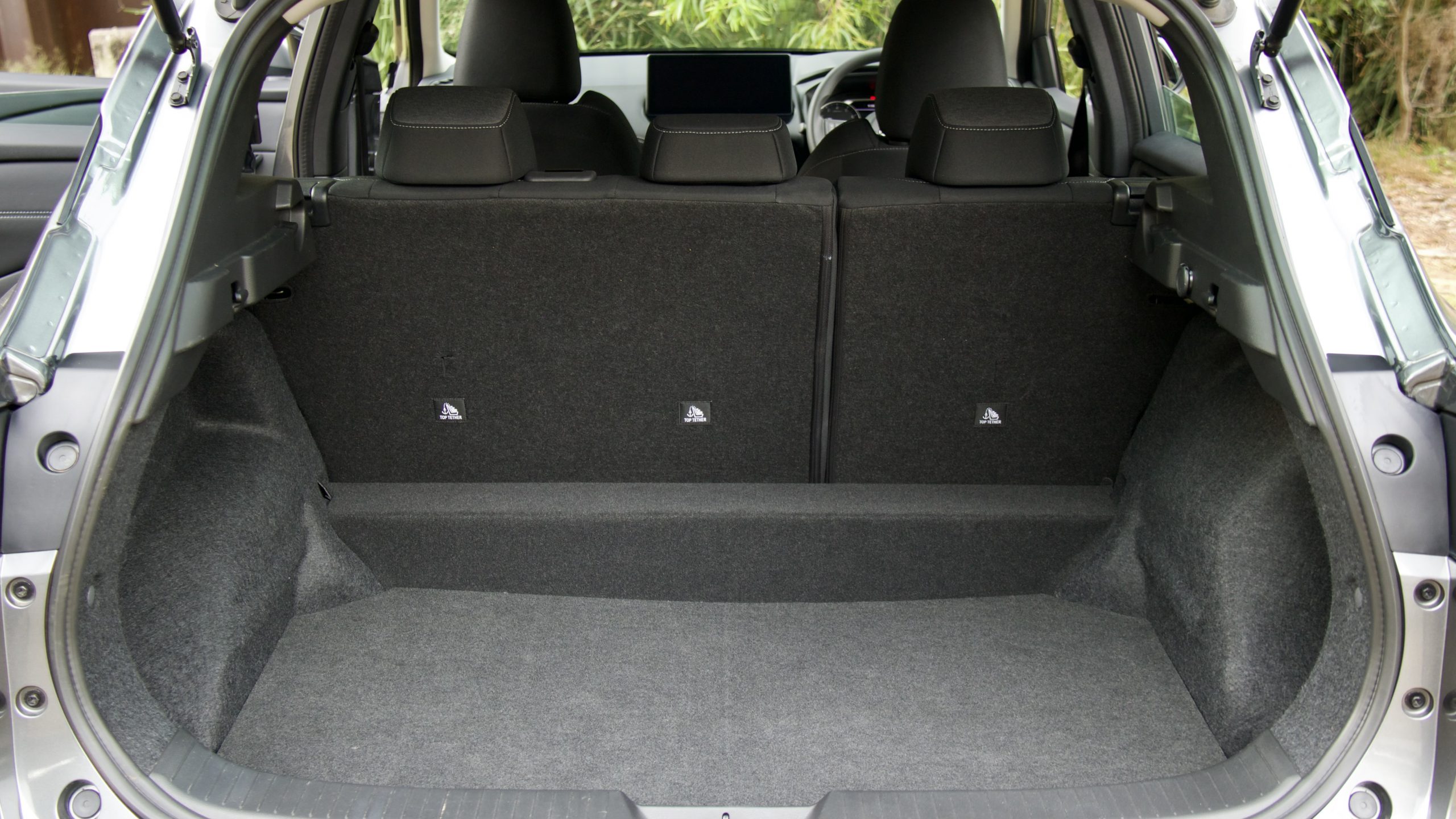
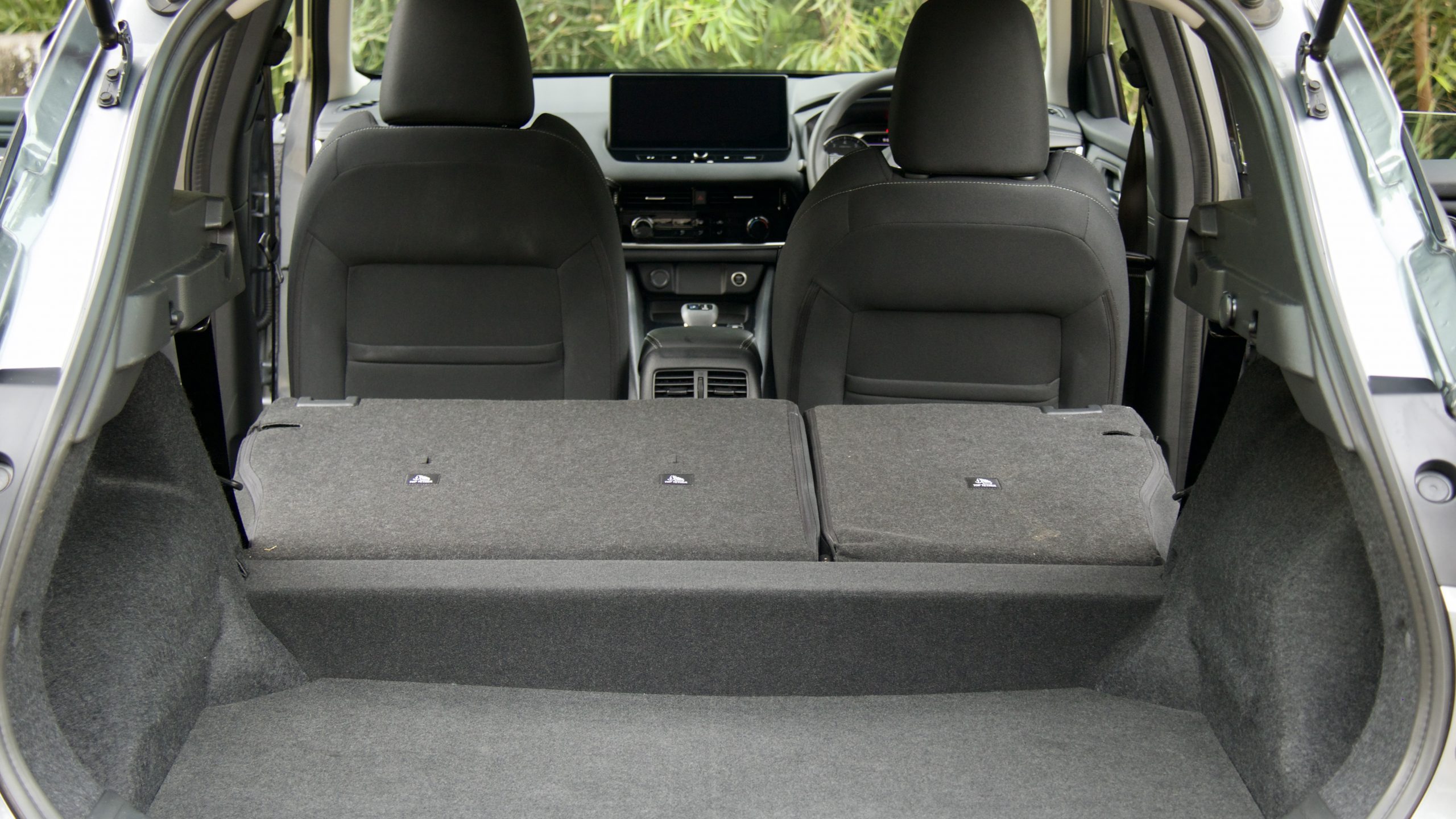
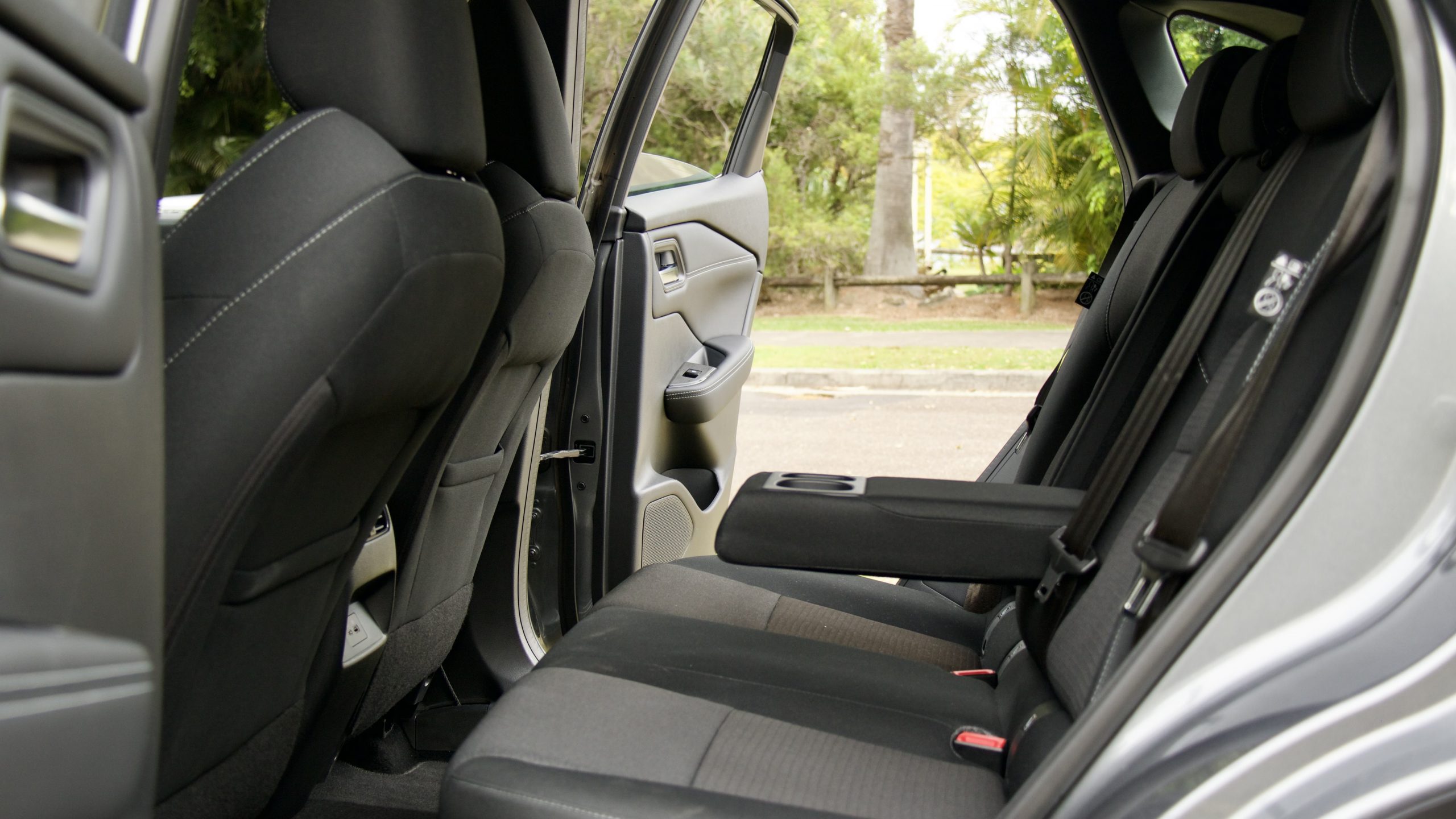
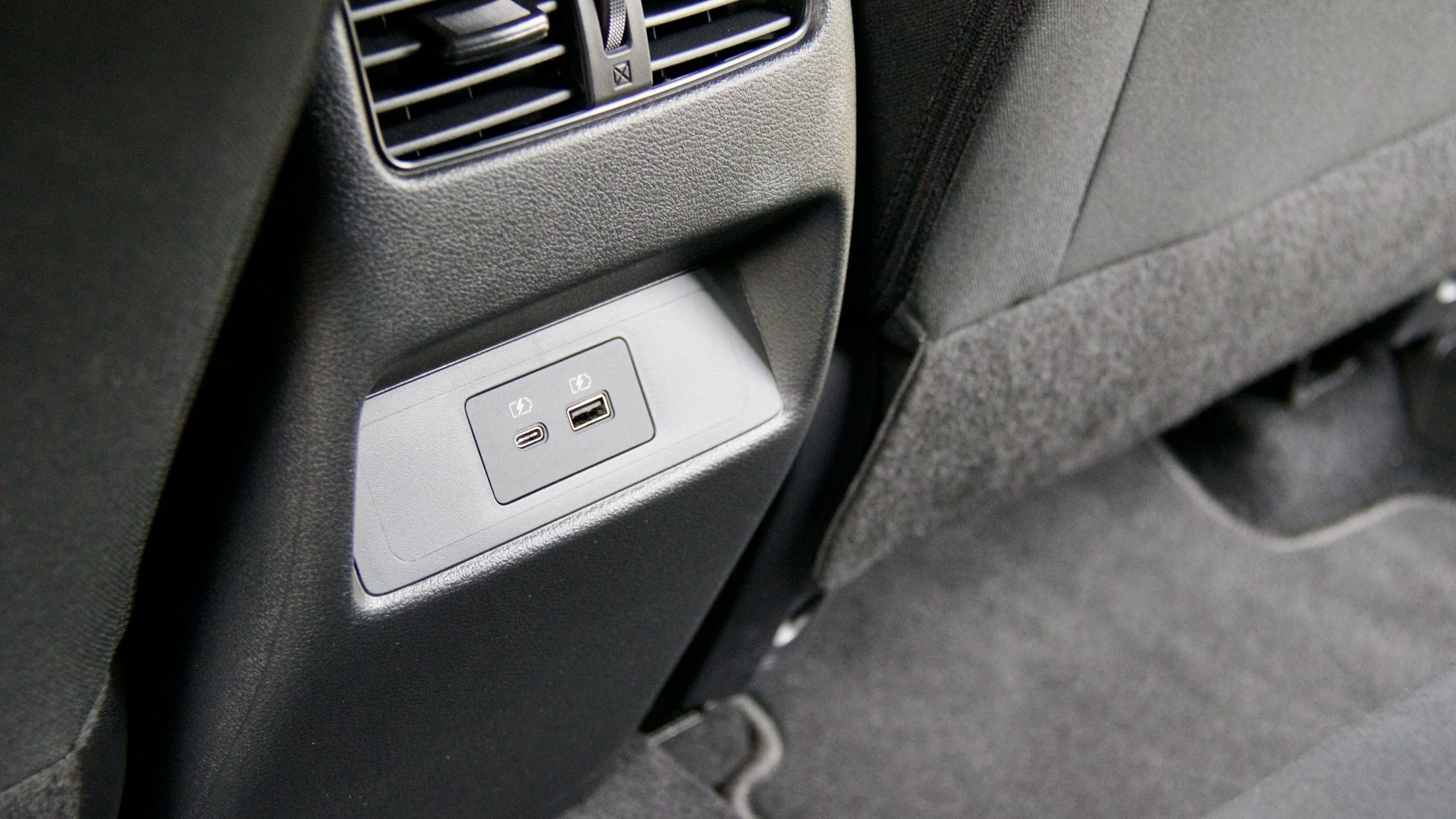
The boot of the Qashqai measures a healthy 429-litres with the seats up and a big 1,524L with them folded. There’s reasonable storage on the sides – including a strap to hold a bottle – and a few hooks to hold bags, as well as a space saver spare wheel underneath the floor. When you fold the seats down, there’s an annoying ridge between the floor and seats – going up the range fixes that with a false floor to make it flat, which we think should be standard across the range.
Service & Warranty: 7.5/10
Like other new Nissan products, the 2023 Nissan Qashqai ST+ is equipped with a five-year/unlimited km warranty with five years of roadside assistance. Its service intervals are once-yearly/every 15,000km and five years/75,000km of servicing costs an expensive $2,916 ($583 per service).
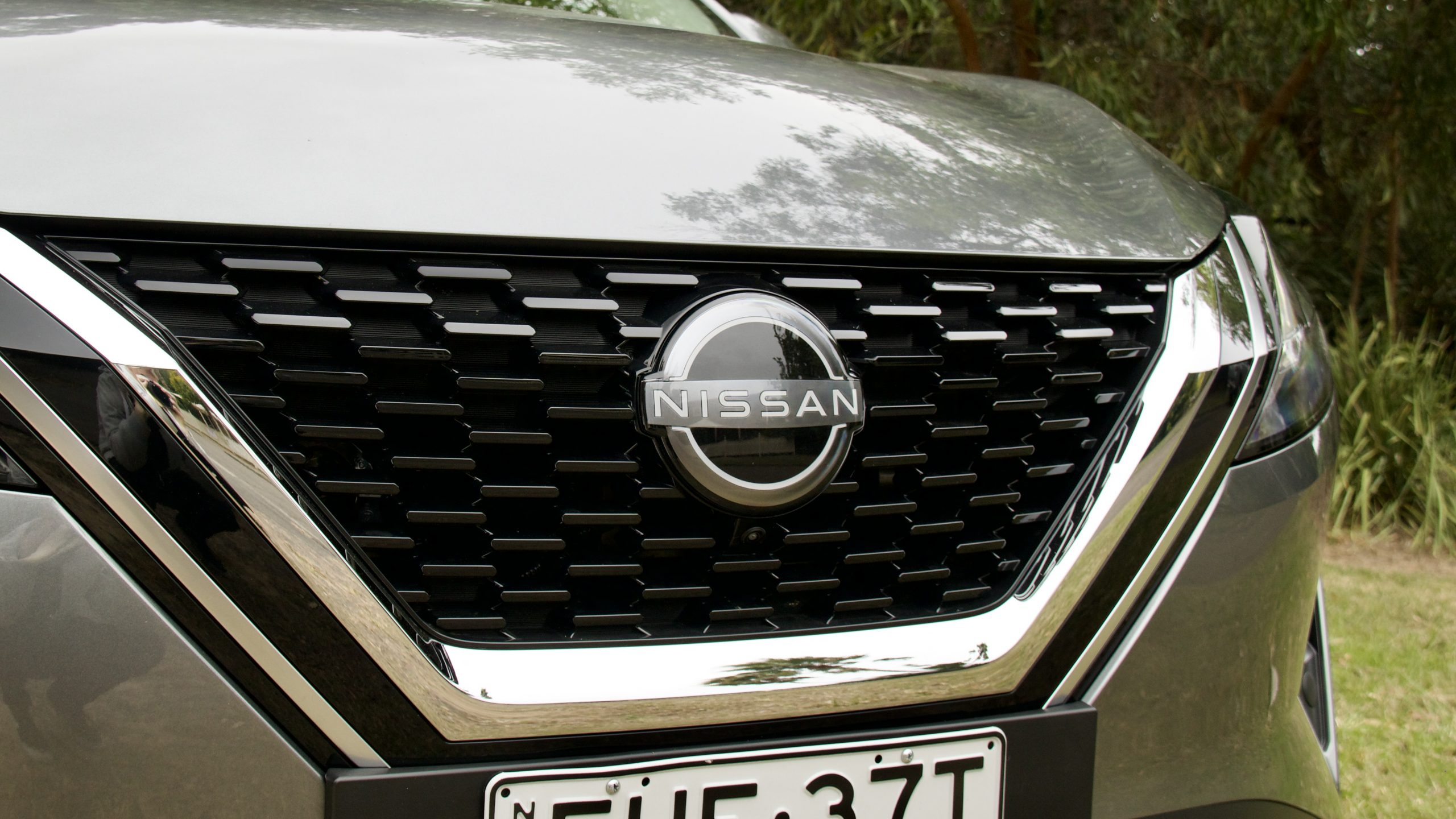
Toyota offers a similar five-year/unlimited km warranty as Nissan – though it doesn’t offer any roadside assistance, but does offer two extra years of mechanical warranty if serviced to logbook requirements. Kia offers a longer seven-year/unlimited km warranty on the Seltos, regardless of where it’s serviced. All three cars offer 15,000km service intervals, and five years/75,000km of servicing the Corolla Cross costs $1,250 ($250 per service) and the Seltos costs $2,072 ($414 per service) – both a lot less than Nissan.
The 2023 Nissan Qashqai ST+ DiscoverAuto Rating: 8.1/10
Overall, the 2023 Nissan Qashqai ST+ is a really likeable car that’s a big step up on the previous generation car thanks to a punchy new turbocharged petrol engine, a smooth CVT transmission, a high quality interior that’s practical and packed with useable tech, a lovely ride and handling balance and a particularly impressive list of standard safety equipment. It’s also quite refined and in a lot of ways feels European – almost like the Volkswagen Golf is to its competitors.
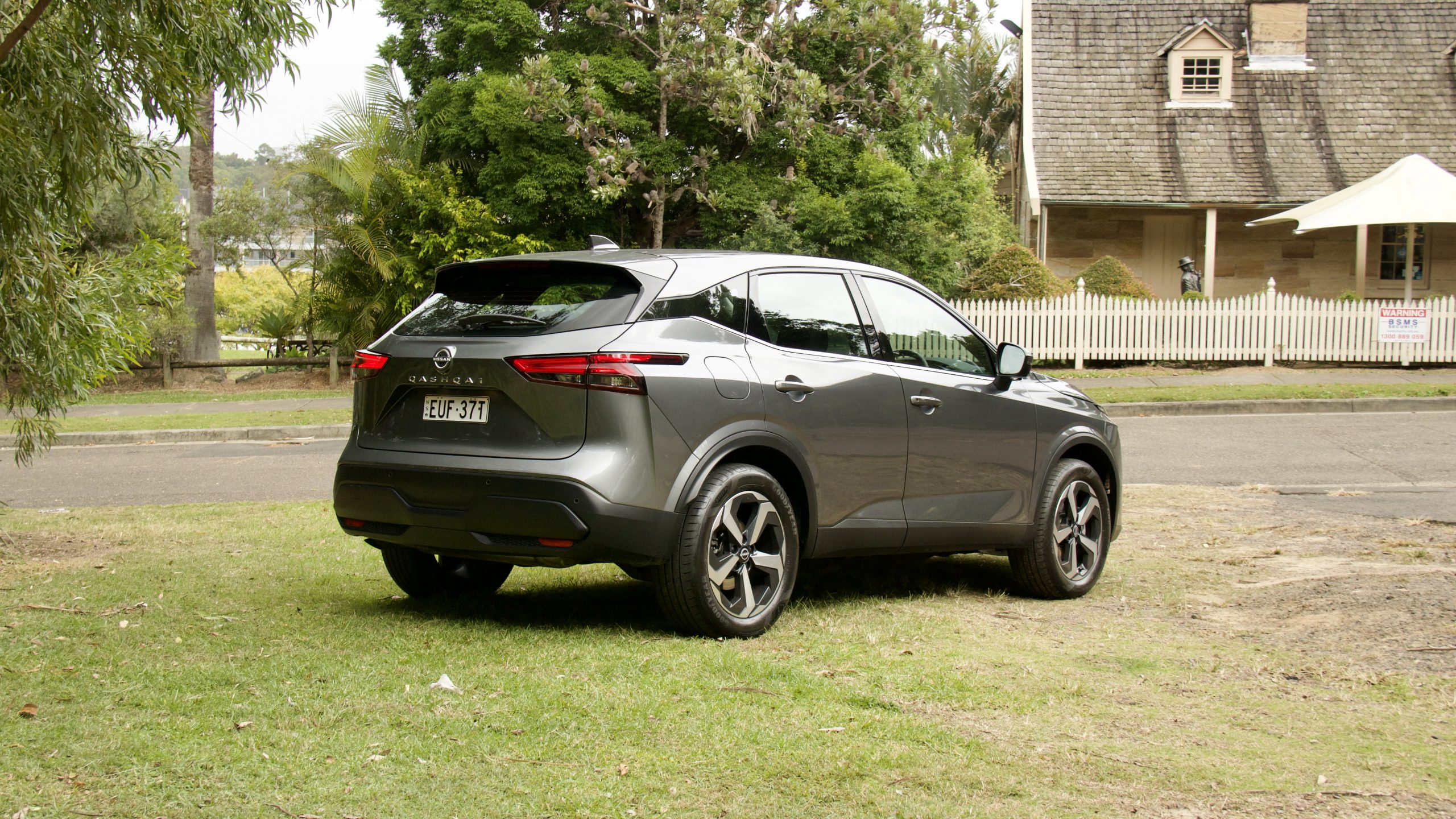
It’s not perfect, however. It’s not cheap to buy – quality doesn’t come at a low price thanks to its UK build – servicing is expensive and it’s lacking a bit of equipment like a leather steering wheel and climate control. The the drivetrain can be somewhat thirsty too, though the incoming hybrid should settle that. But overall, we think it’s a big step up for the Nissan brand and it’s quite a compelling offering in the small SUV segment.
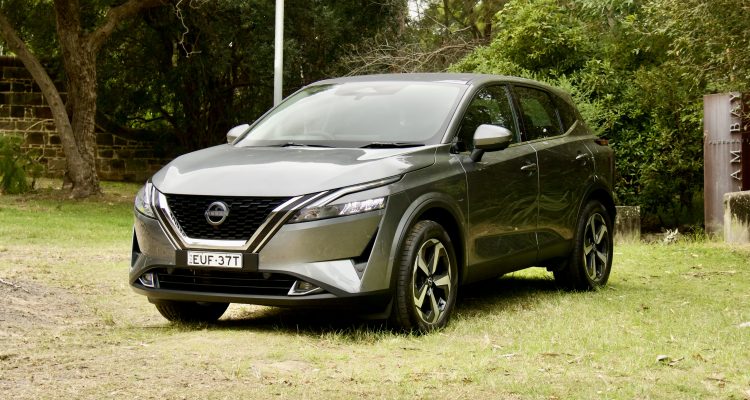
Leave a Reply